Ep. 20: A Bride’s Story vol. 1 by Kaoru Mori
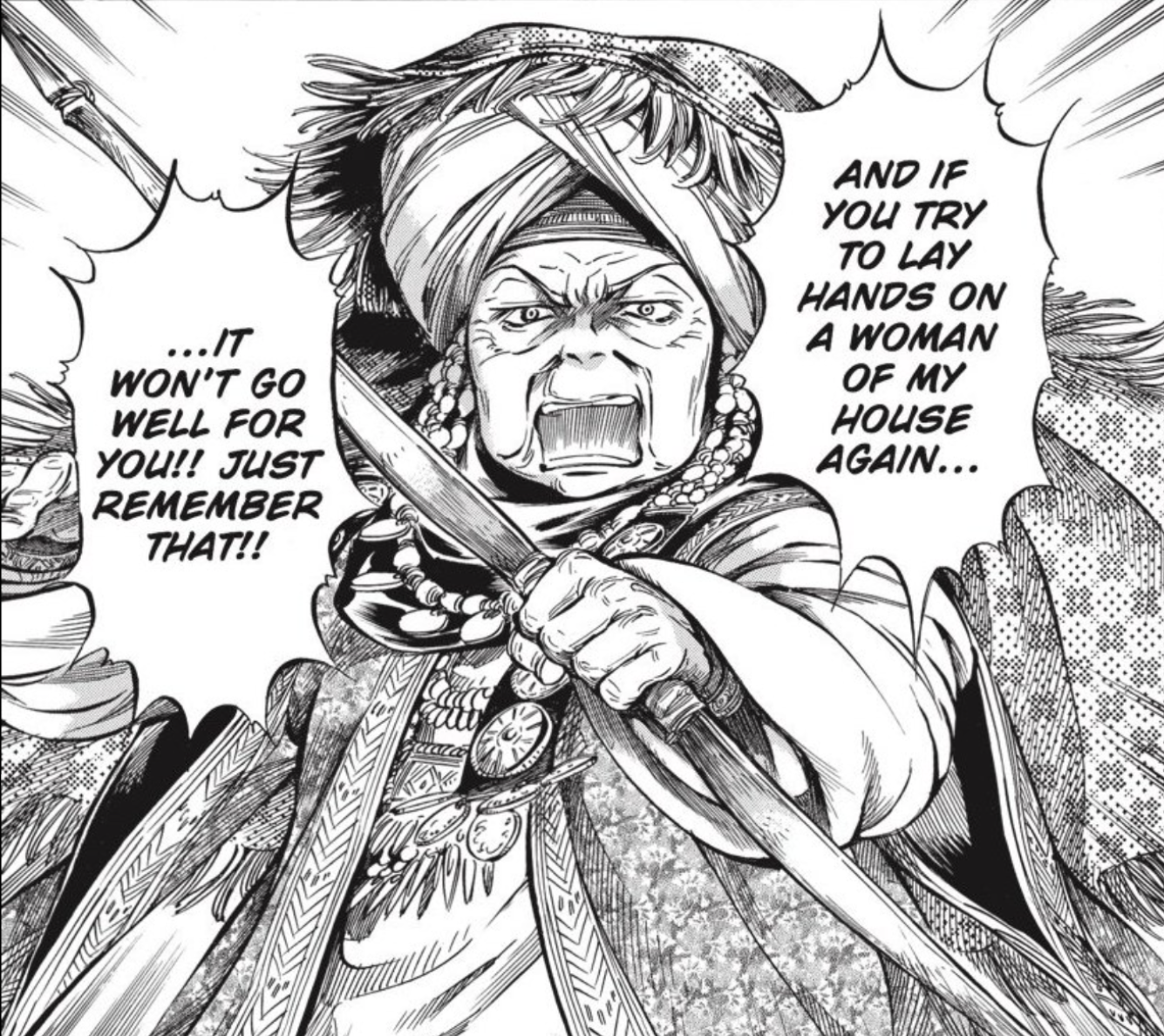
This week the gang reads Kaoru Mori’s beloved historical fiction manga A Bride’s Story. Deb picks and hosts this week, wanting to give a little gift of great manga to Chip. Will he accept it? Listen on to find out!
Powered by RedCircle
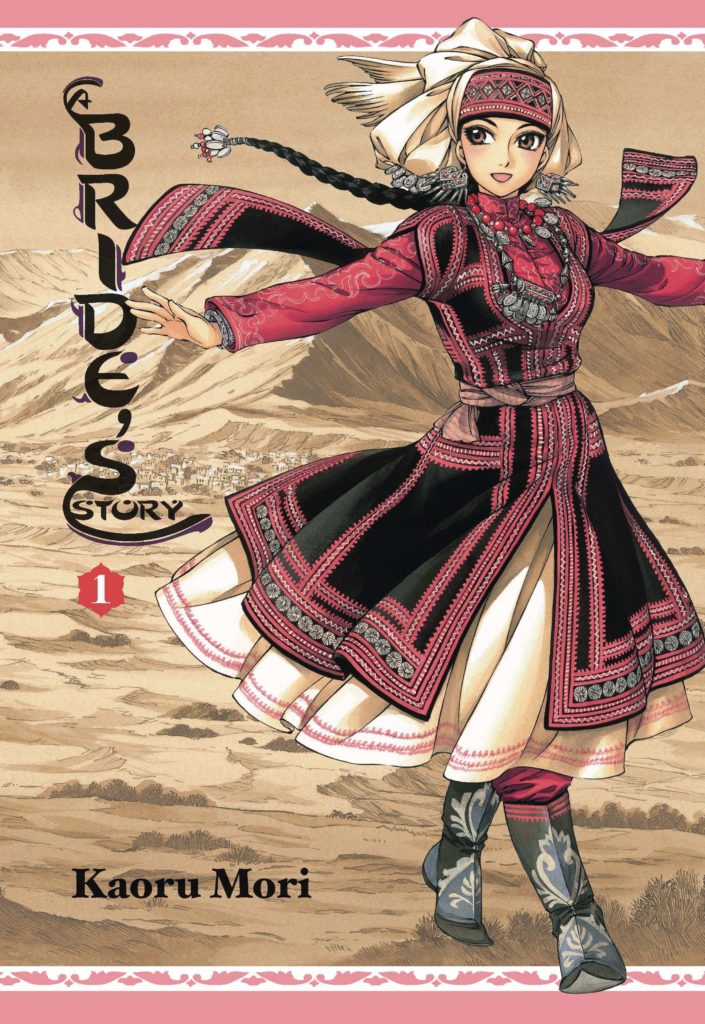
A Bride’s Story
By Kaoru Mori
Translated by William Flannagan
Lettered by Abigail Blackman
Published by Yen Press (Print/Digital)
00:00: A quick note: We were getting a bit of weird feedback/echo in this episode, and while David did a ton of work to clean it up (thanks David!), there are little bits here and there where sound drops out a touch, usually at the end of sentences. We’re aware of it, we’ve managed to fix it starting with episode 22. Thanks for understanding!
Also, right up front, here’s a bit of background about Kaoru Mori, her first big hit Emma, and a bit of an introduction to A Bride’s Story.
Kaoru Mori: Born in 1978, Kaoru Mori is a Japanese manga artist from Tokyo. She is the creator of the manga works Shirley (out of print in English), Emma (originally from CMX in English, license-rescued and currently in print from Yen Press), and A Bride’s Story (ongoing, from Yen Press). Her works are centered almost exclusively on women.
Emma: Calling upon his former governess, William Jones, gentleman, is startled when his knock is answered by an uncommonly beautiful servant, the soft-spoken Emma. Throughout his visit, William’s eyes drift to the maid whenever she enters the room, and he contrives to meet Emma socially as she goes about her errands. But London society is a web of strict codes and divisions. For the son of a wealthy merchant, seeking out a working-class girl is simply not done! William’s father plans for his son to marry into the peerage and elevate the Jones family to greater heights, but although William says and does what is expected of him, he longs only for Emma’s company… (5 volumes, hardcover 2-in-1s)
A Bride’s Story: Acclaimed creator Kaoru Mori (Emma, Shirley) brings the nineteenth-century Silk Road to lavish life, chronicling the story of Amir Halgal, a young woman from a nomadic tribe betrothed to a twelve-year-old boy eight years her junior. Coping with cultural differences, blossoming feelings for her new husband, and expectations from both her adoptive and birth families, Amir strives to find her role as she settles into a new life and a new home in a society quick to define that role for her. (Ongoing)
(Quick note: Even though Yen’s press info says this is set along the Silk Road, and we mention that as well, the story is actually set in the Great Gamer-era Aral Sea region. Apologies for any miscommunication!)
Anything and Something: Hilarious and heartwarming, this short-story collection by Mori-sensei shows a different side to her work. David describes it as “horny” later in this episode. (One volume.)
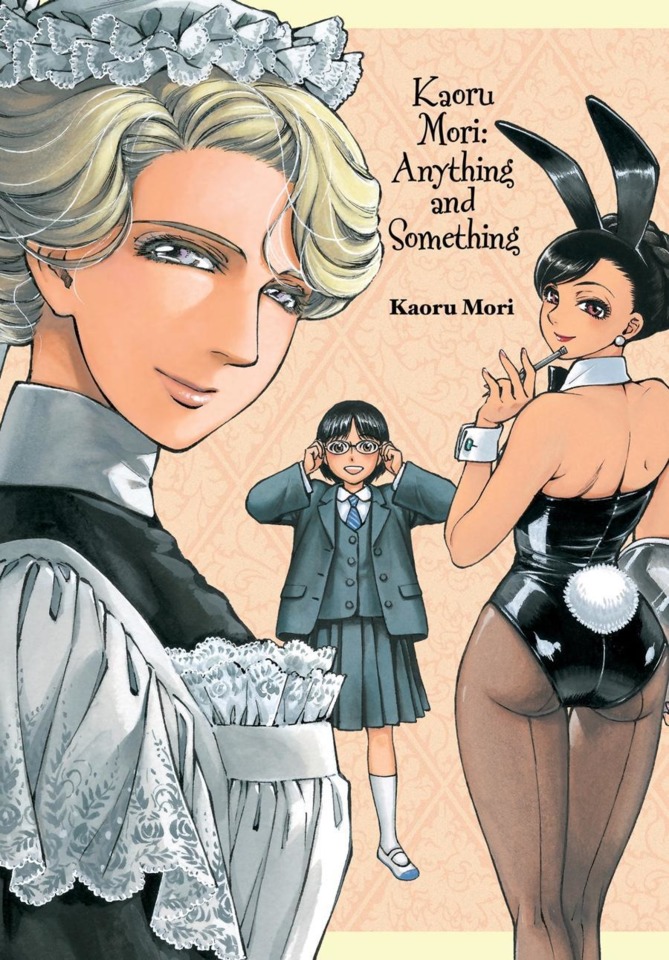
03:20: CMX. We’ve mentioned them before, but essentially CMX was the manga imprint from DC Comics, launched during the manga boom and crashed and burned when the manga crash happened. A perfect example of a company not understanding something, trying to capitalize on it, and then bouncing the second the going gets rough. You can read the original press release here, and launched with a seinen action, a shojo romance, and a 70s shojo romance, which was a dramatic misreading of the market at the time. While the line did improve over time, and was actually starting to release some really challenging works, the over-saturation (and attendant failure) of the launch, coupled with the crash of the manga market in the late 2000s, meant that CMX never really broke out, and DC shut down the line in 2010. It is now mostly remembered for releasing a censored version of the softcore porn and violence manga Tenjo Tenge (which was also rescued, and is now available from VIZ Media), but honestly, their other problems were much, much bigger.
Can you imagine if DC Comics actually still had a manga imprint? Manga had its biggest year ever in English this year? Hah, anyway.
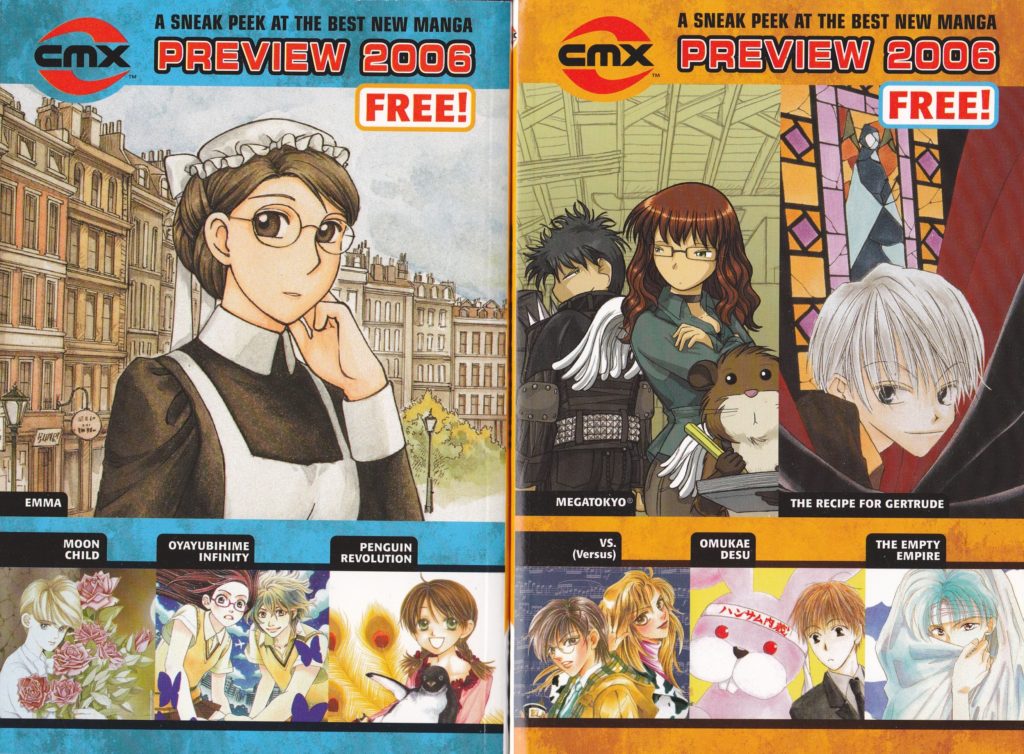
07:00: I kind of wish this family tree chart was up front in this volume, rather than at the back. It would make it easier to keep track of the large cast:
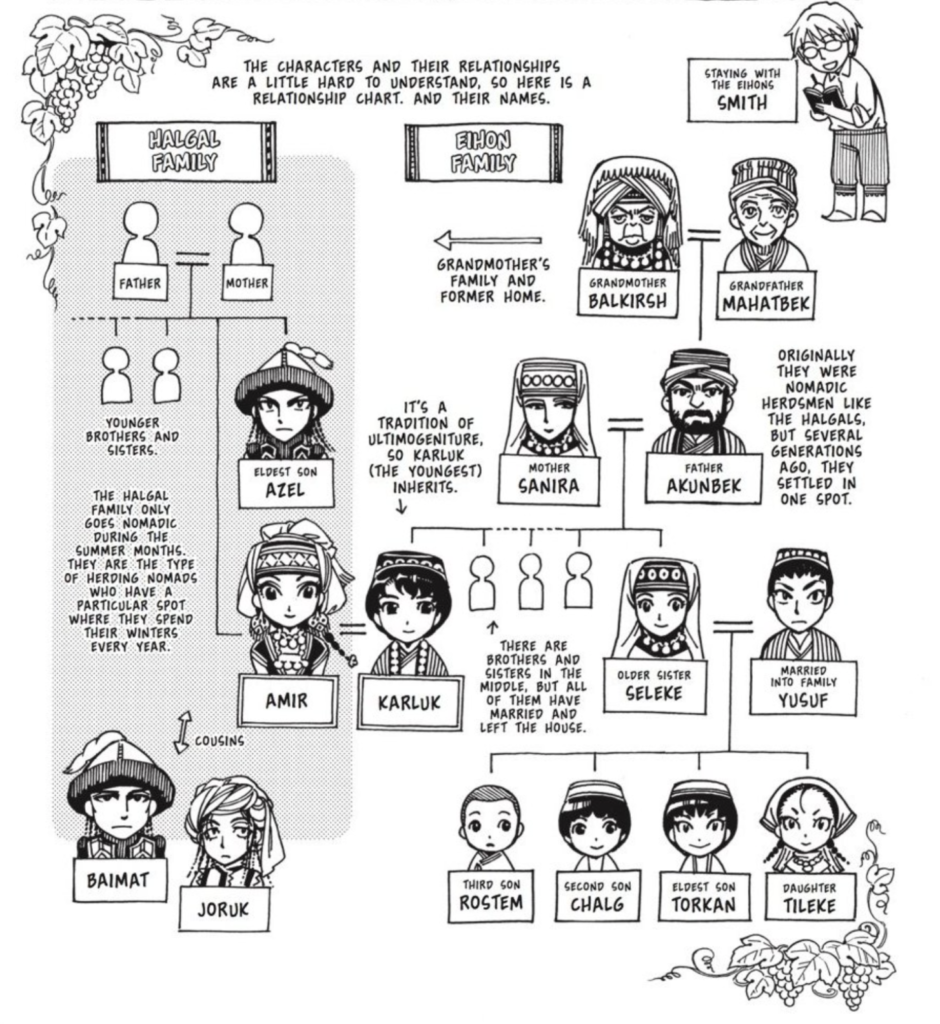
08:20: As mentioned previously, Kadokawa’s Harta manga magazine comes out 10 times per year, and issues are usually 600-700 pages, and often features tons of bonus material with each volume. Harta comes from the Indonesian word ‘harta’, which means ‘treasure’. Big hits from Harta include A Bride’s Story, Delicious in Dungeon, Ran and the Gray World, and Haven’t You Heard? I’m Sakamoto.
https://en.wikipedia.org/wiki/Harta_(magazine)
https://www.harta.jp/
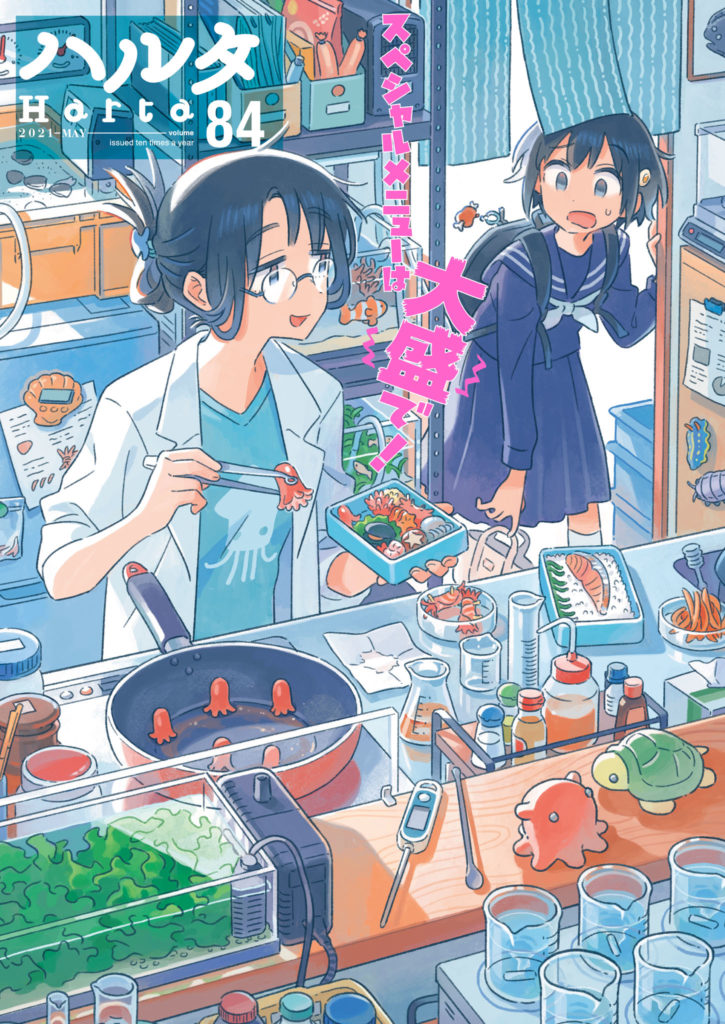
Neither here nor there, but I’ve literally never been able to tell why certain manga end up in Kadokawa’s Harta magazine, and why some show up in Kadokawa’s very similar magazine Comic Beam. They’re both sort of weird seinen magazines that are much more general-interest, and much less “men’s manga.” I dunno, this one is really down the rabbit hole of manga stuff? Heh. Anyway, they’re both great.
08:30: The videos of Kaoru Mori drawing that Deb mentions are located here on the Japanese pop culture news site Natalie.
09:26: He liked it! And it might be his favourite yet! WOOHOO! The system works, people.
09:40: HE BOUGHT A MANGA! WITHOUT HAVING TO FOR THE PODCAST! I think we’ve won?
11:15: The boy going to the woodworker, the white space around their heads denoting the still passage of time, wood shavings and wood shavings to show the effort of craftsmanship. A really neat part of this manga.
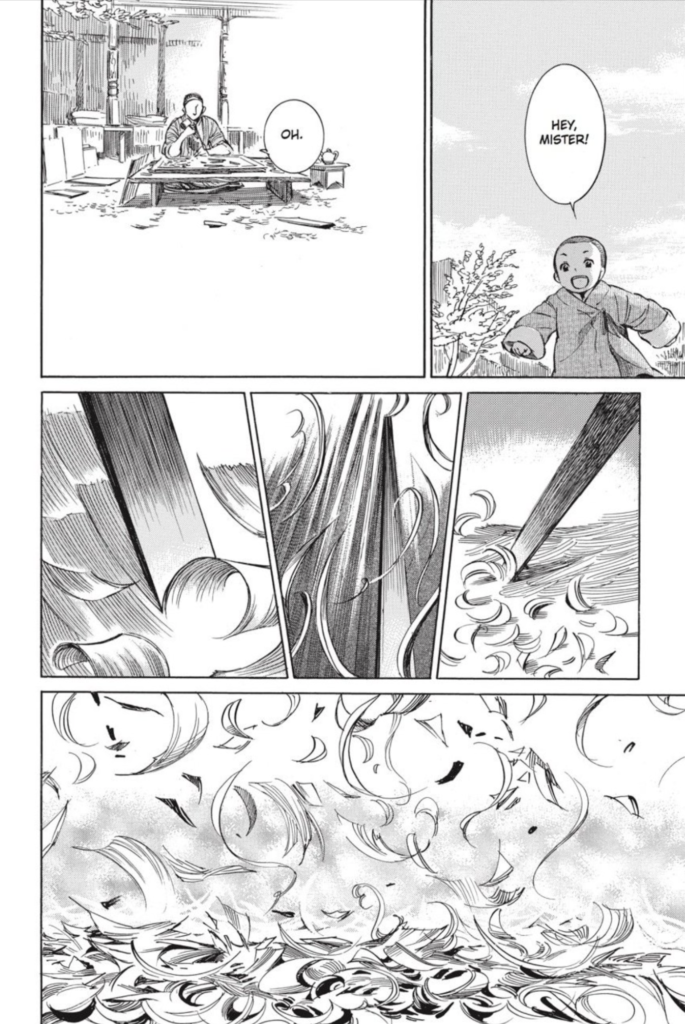
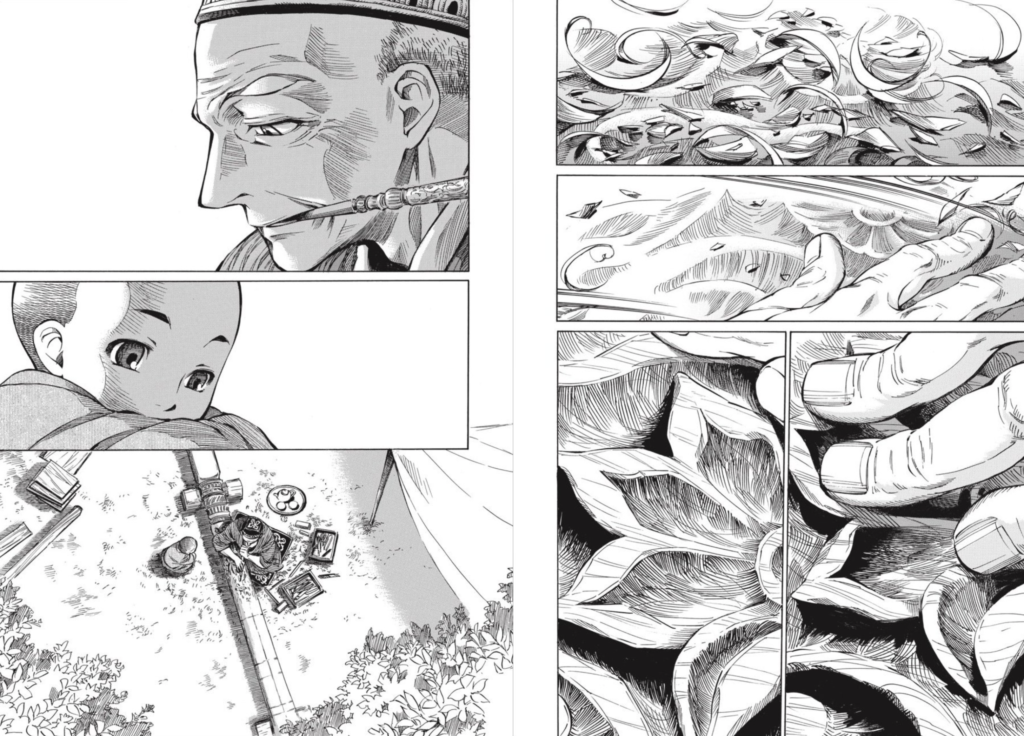
12:20: As a reminder: The double-page spread of the train from Fullmetal Alchemist volume 1 was deeply unimpressive.
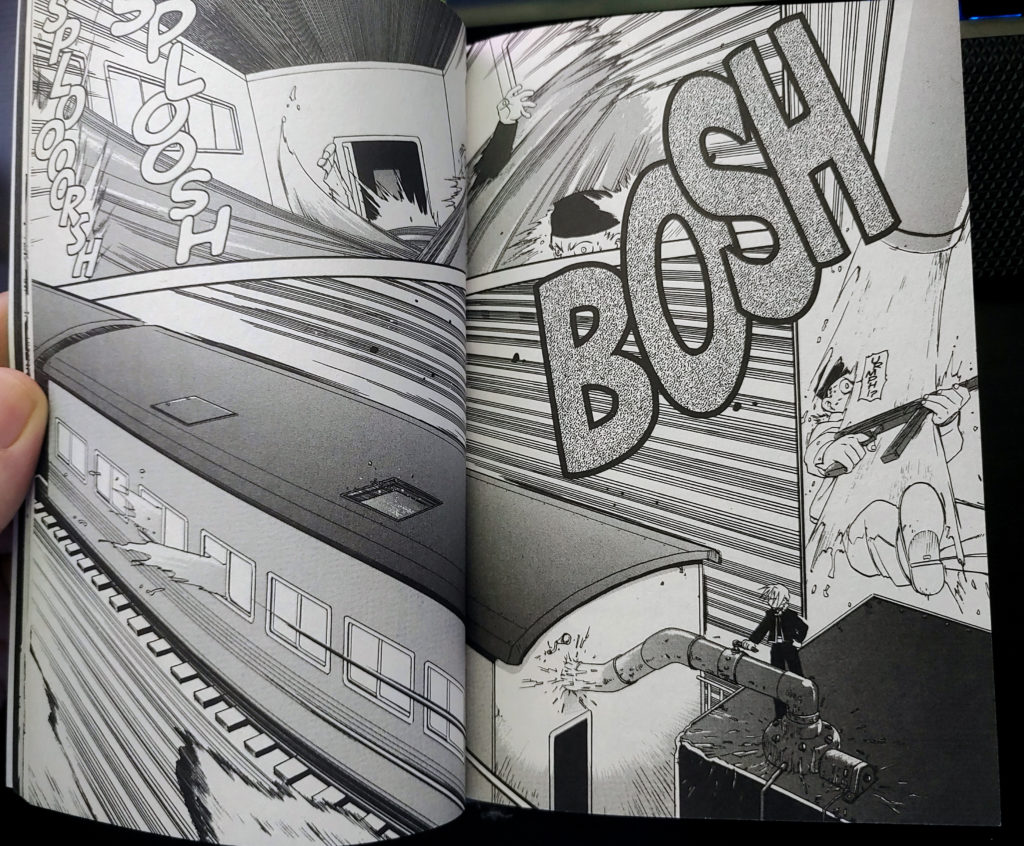
14:00: The scene with her disrobing and it almost getting ‘weird.’ I think Chip’s right in that the series seems a bit problematic in its conception, but in its execution it’s incredibly nuanced, smart, and leaves a lot of the problematic stuff behind. There’s a shitty review of this volume that tries to have its cake and eat it too by describing it as “Borderline creepy”, but like, boo-urns to them, and they’re not getting my hard-earned link.
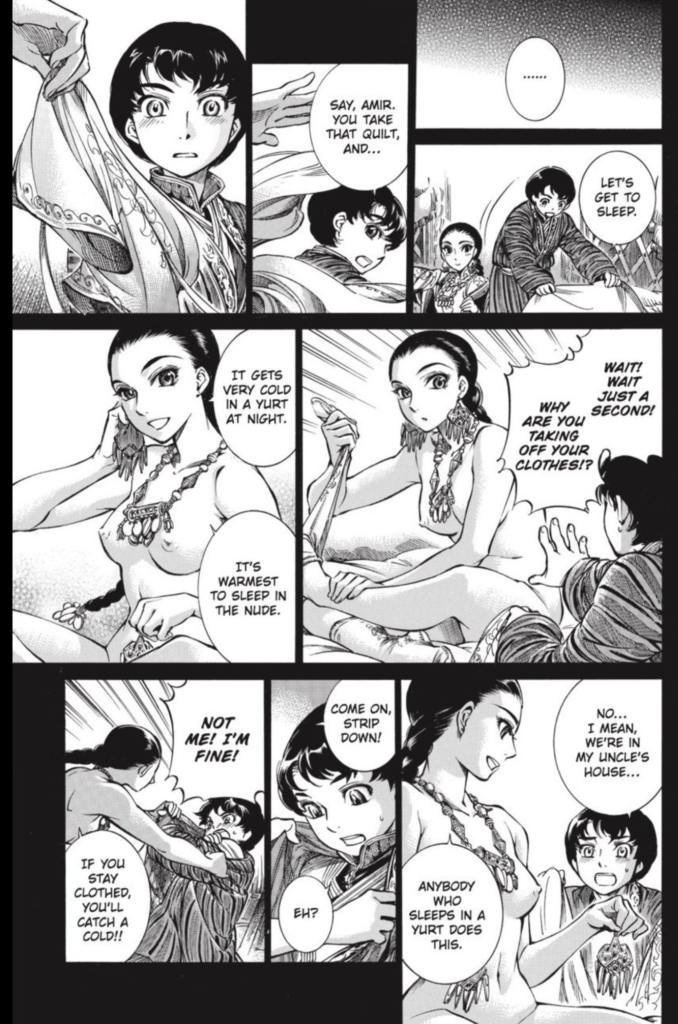
15:15: The “Where’s the goat?” scene really is hilarious. Kid logic. Like, why wouldn’t there be a cool looking goat?
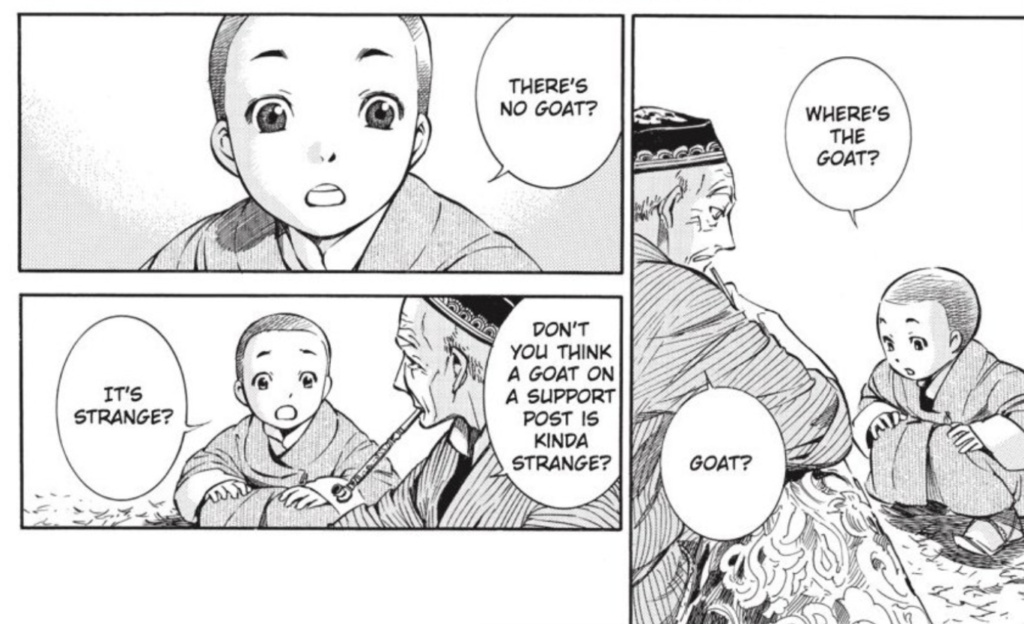
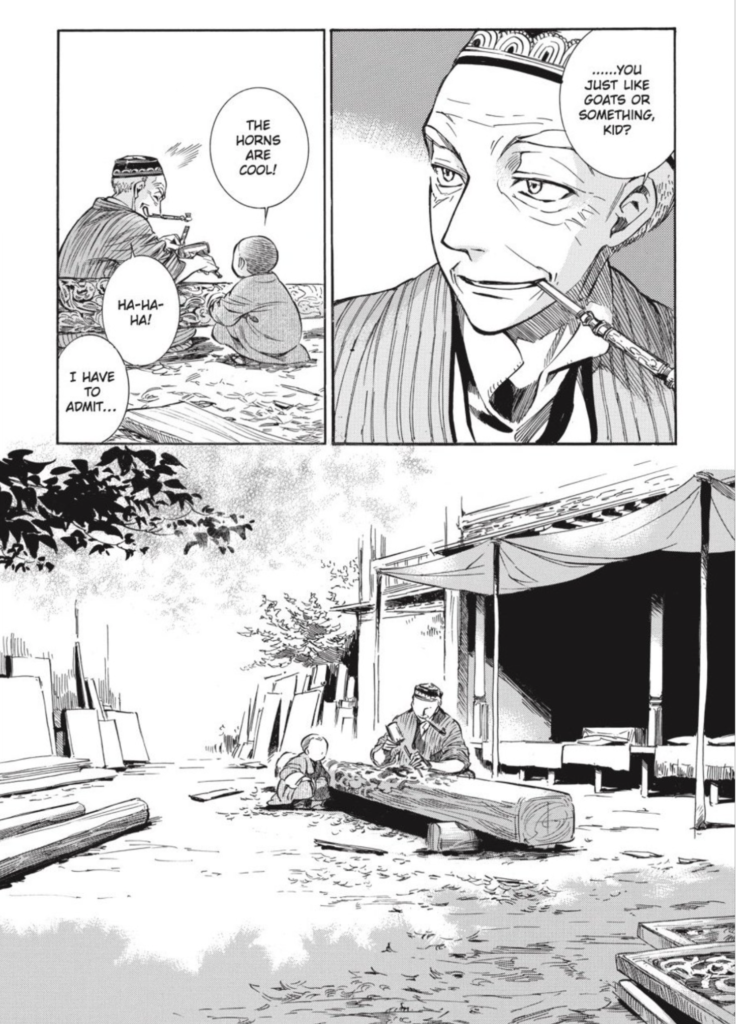
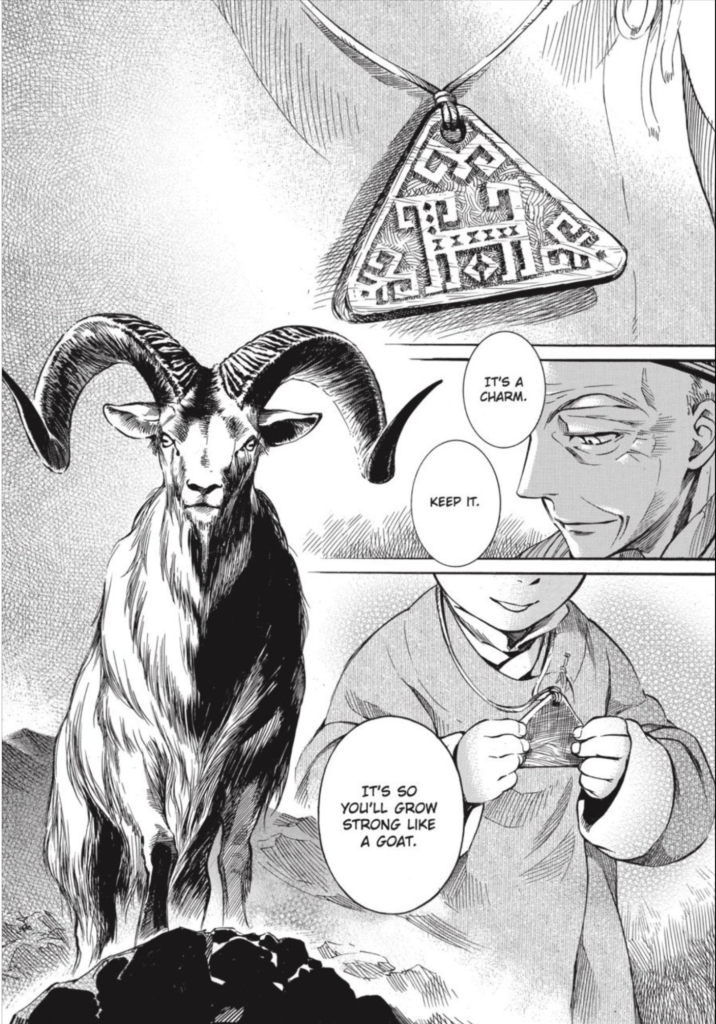
15:55: I was wondering if the six-page pullout illustration of the Batcave from All Star Batman & Robin by Jim Lee (with Frank Miller) would be online or not to share, and of course, it is.

18:35: The rabbit chase, a 6-page sequence, is just incredible. Dropping backgrounds out, changing the focus, leading the eye from panel to panel, Mori-sensei is incredible.
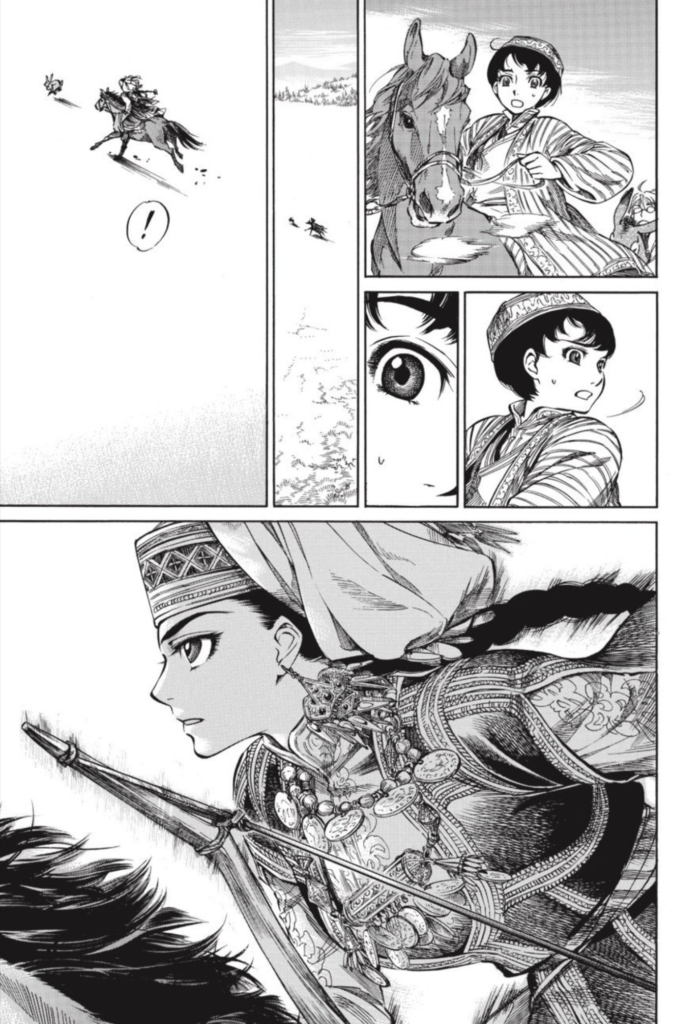
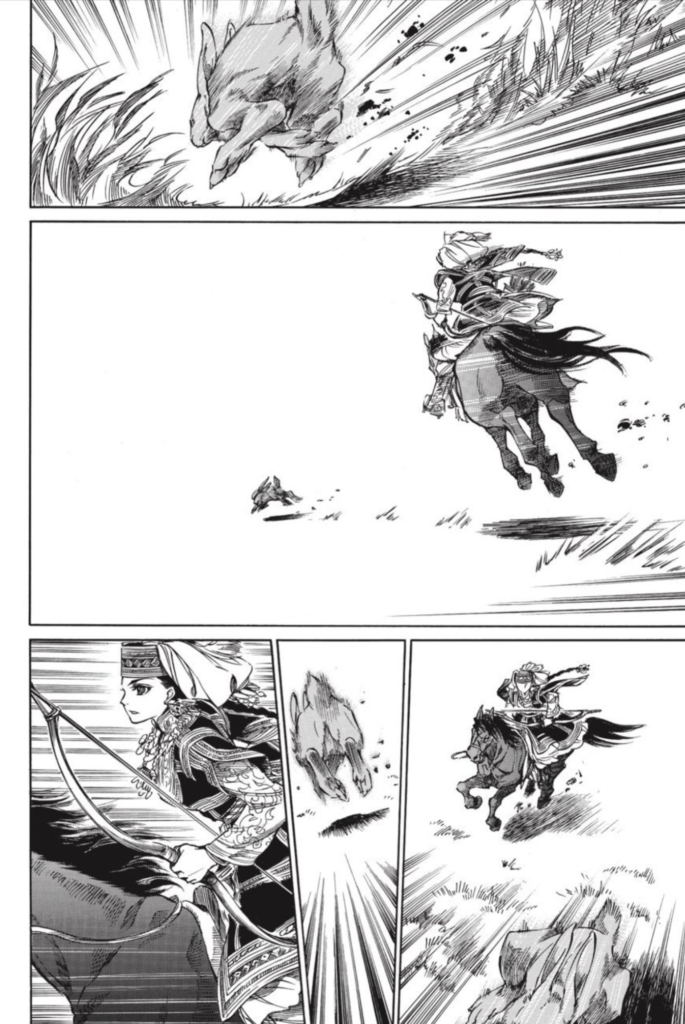
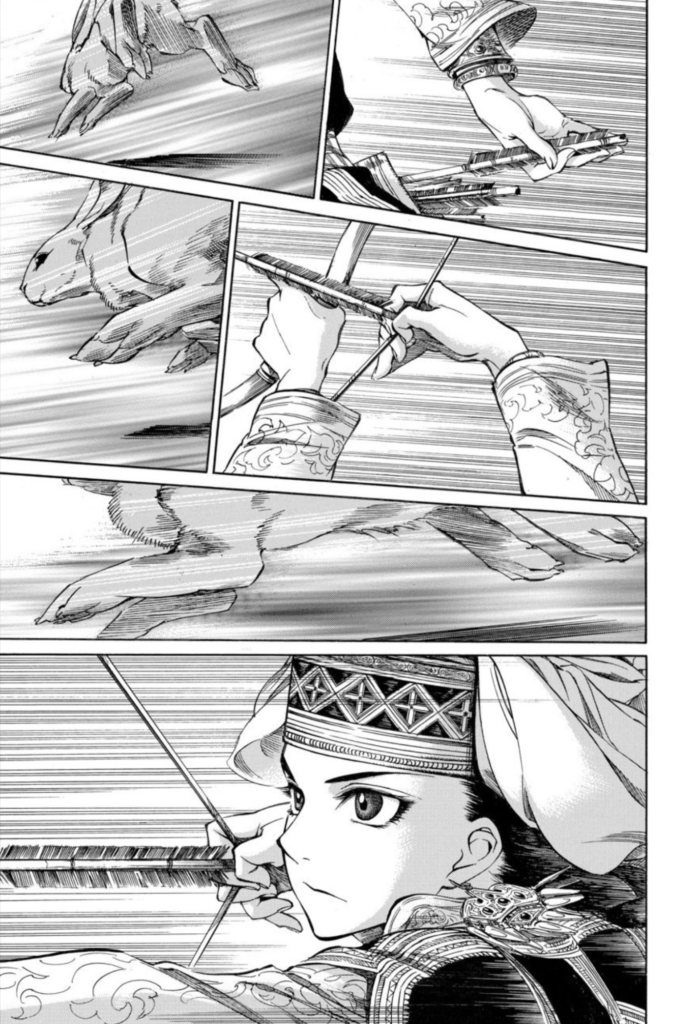
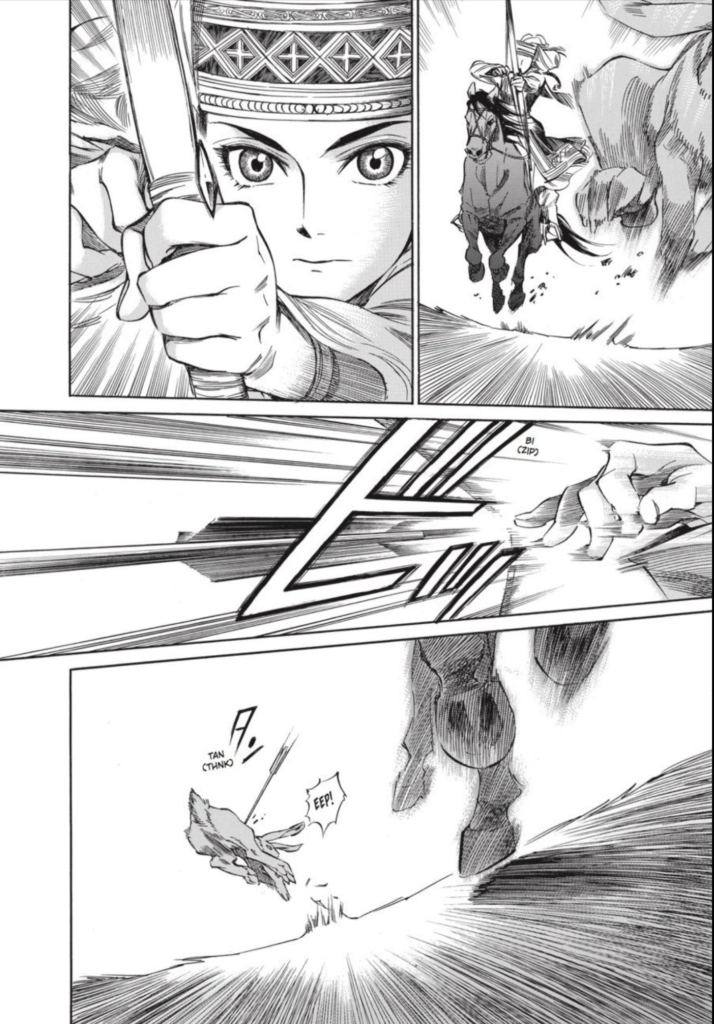
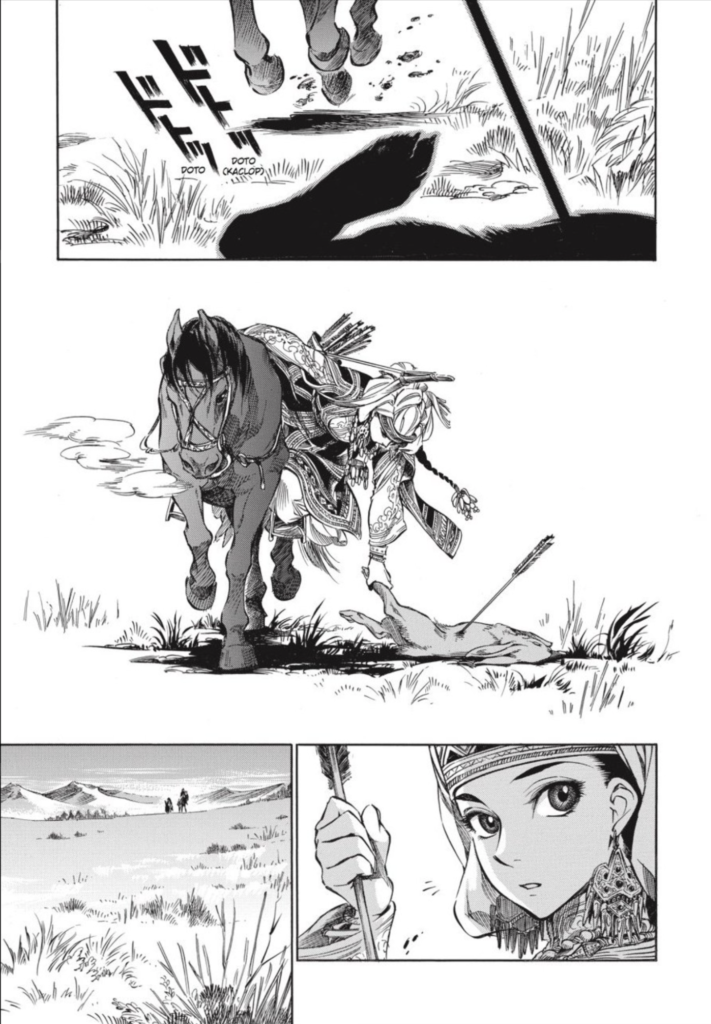
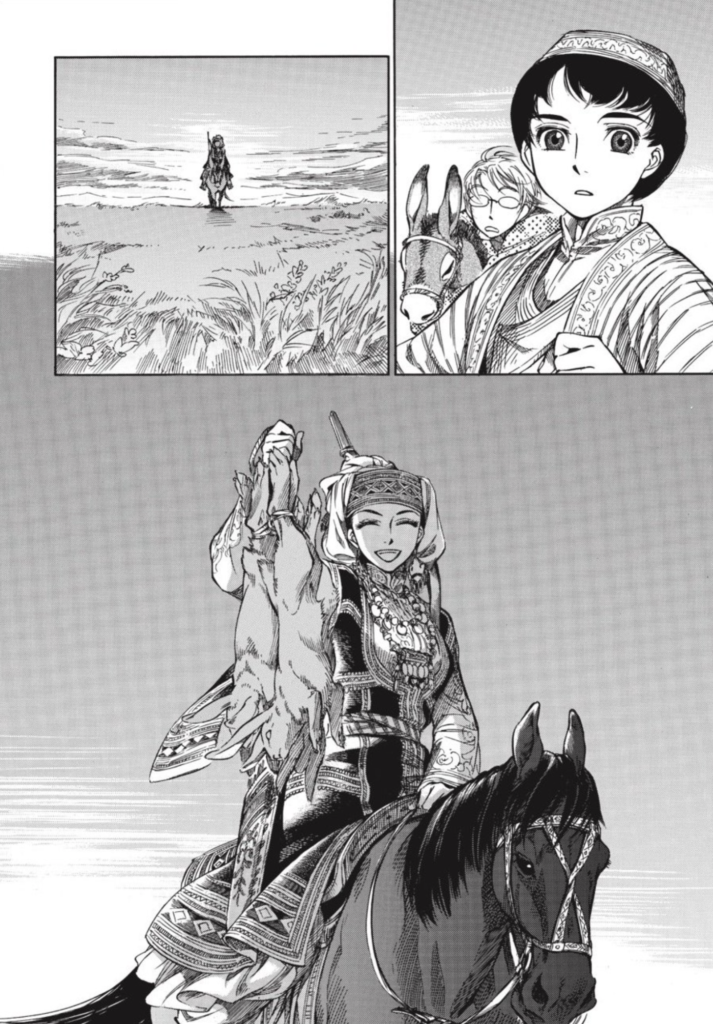
21:15: Bad-ass grandma, aka Balkirsh, has such a great character introduction in this episode.
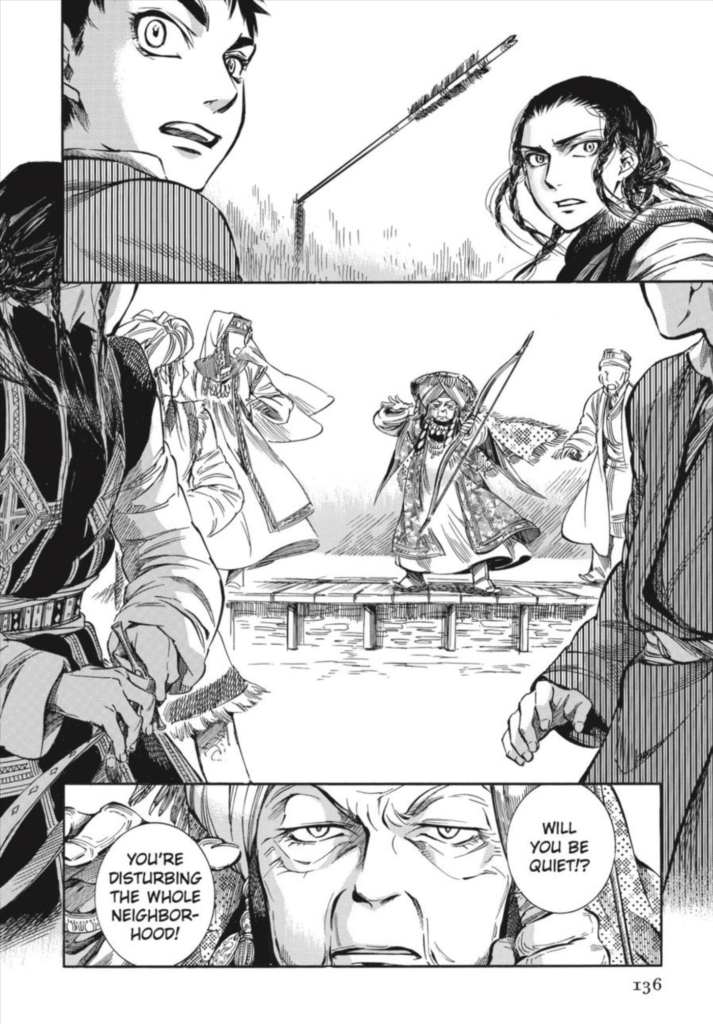
28:39: So as we referenced on the podcast, this is the part of the author-notes that has Mori-sensei explain what she likes about Amir. The author notes in this volume are awesome, btw, with tons of extra info and cute jokes and things. Top-tier author notes.
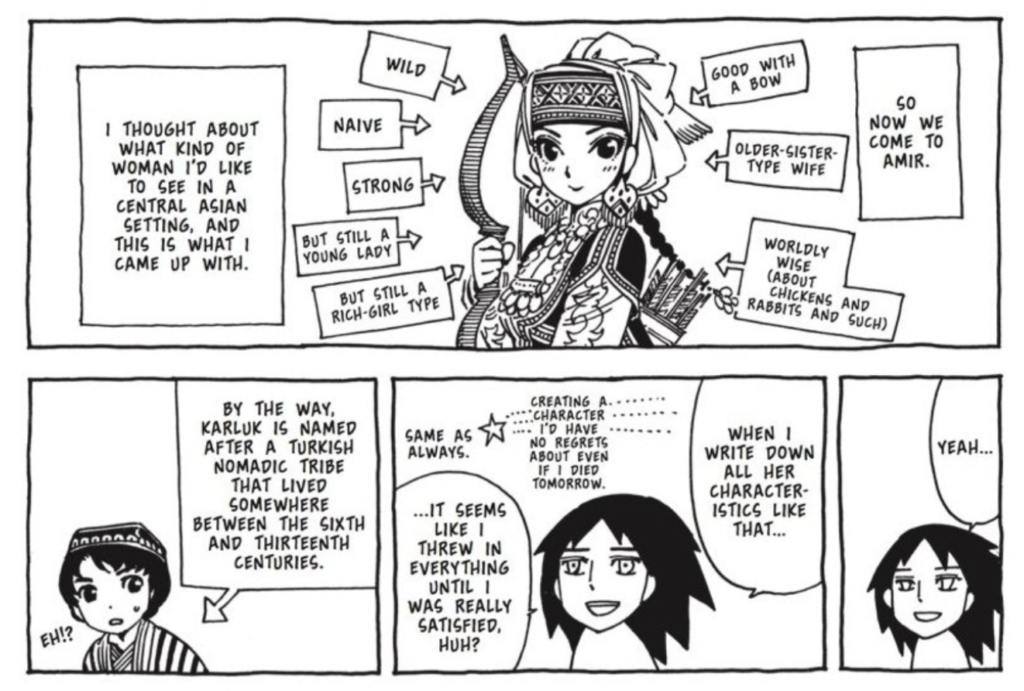
29:30: The flashback pages, where she shows how flashbacks have a different density, or weight. Including changing between present-day and flashbacks on the same page. It really is a strong bit of storytelling, of letting the art do the heavy lifting without captions or overly-explaining things. Comics, that trust that you know how to read comics.
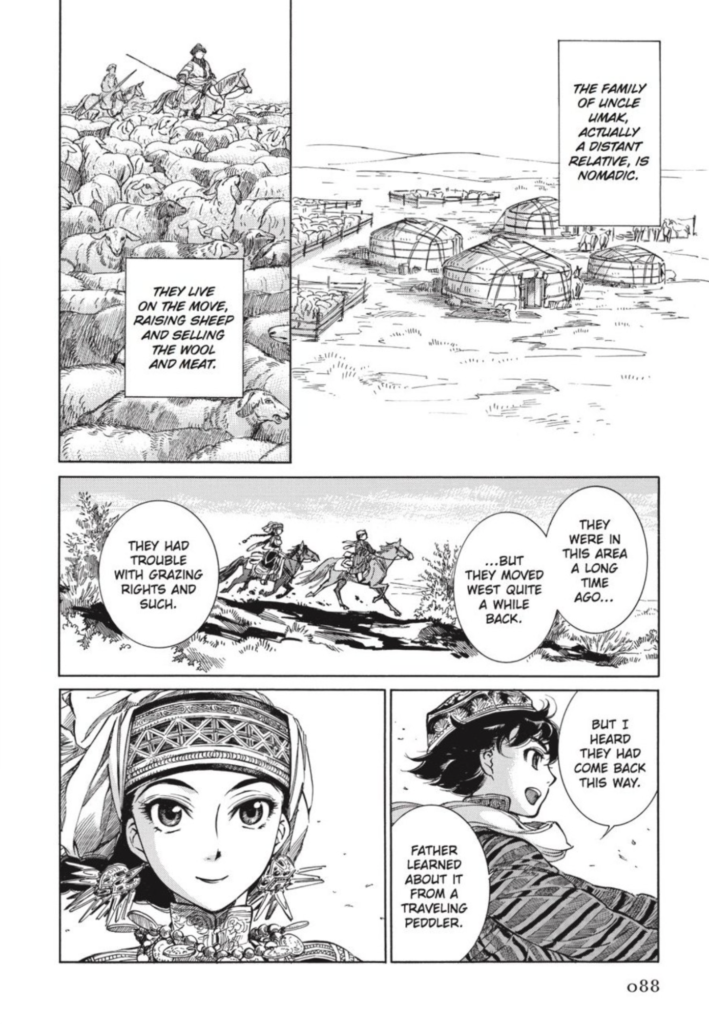
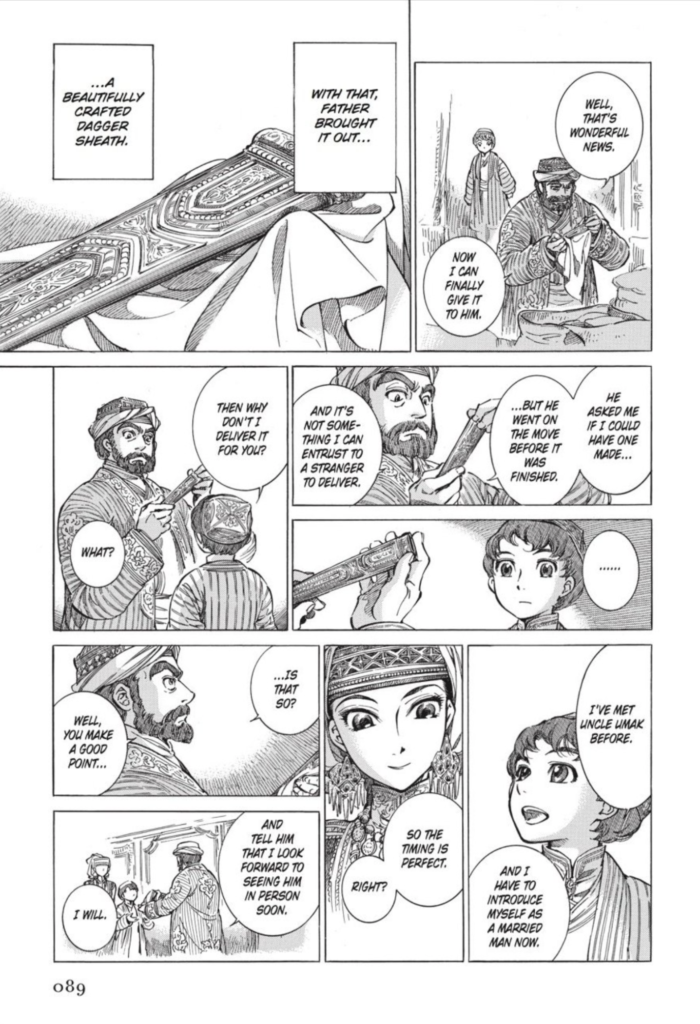
30:30: I talk a little bit about it, but the biggest thing about the grandma-intro scene (other than she’s a total bad-ass grandma), and her using a bow, and it having been part of her dowry, is that it directly links her to Amir. It shows that people from outside, nomadic tribes that hunted and have been marrying into tribes that have formed villages, for generations. Maybe Amir’s life will be different, maybe it won’t, but this points to a continuity of experience that adds incredible depth to the world.
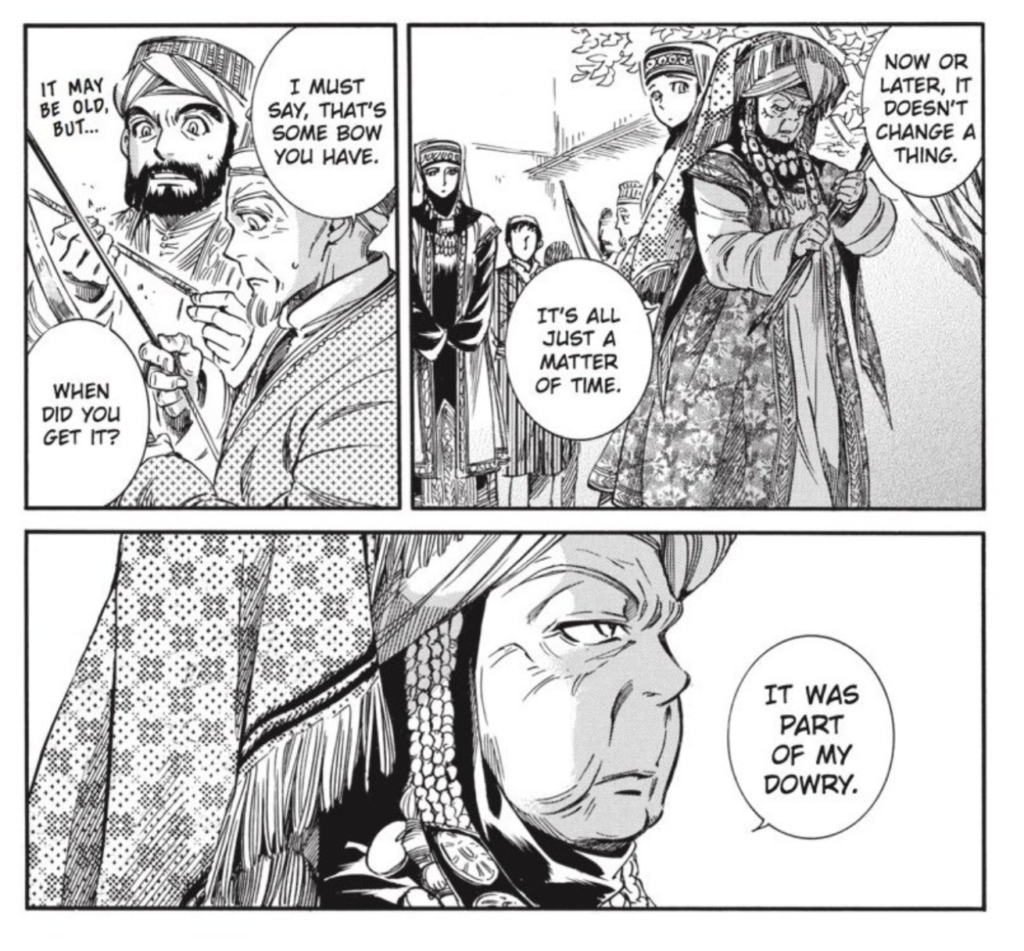
32:10: Of course we had to do that Grandma/Rita Repulsa comparison
35:50: Chip talking about the vertical panels to show the rabbit chase, versus wide panels.
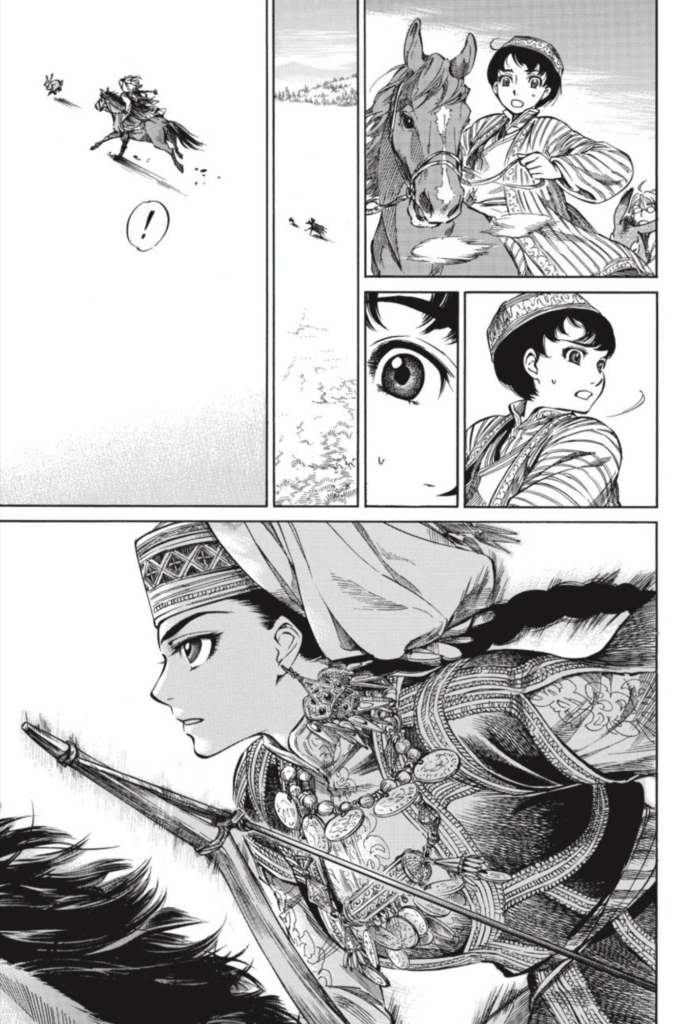
37:30: For what it’s worth I have no idea which manga Chip’s referring to here, but I don’t think it’s that important to the discussion. 😉
38:45: “Not even once have I wished you were younger…” shows that the author knows what she’s doing on so many different levels.
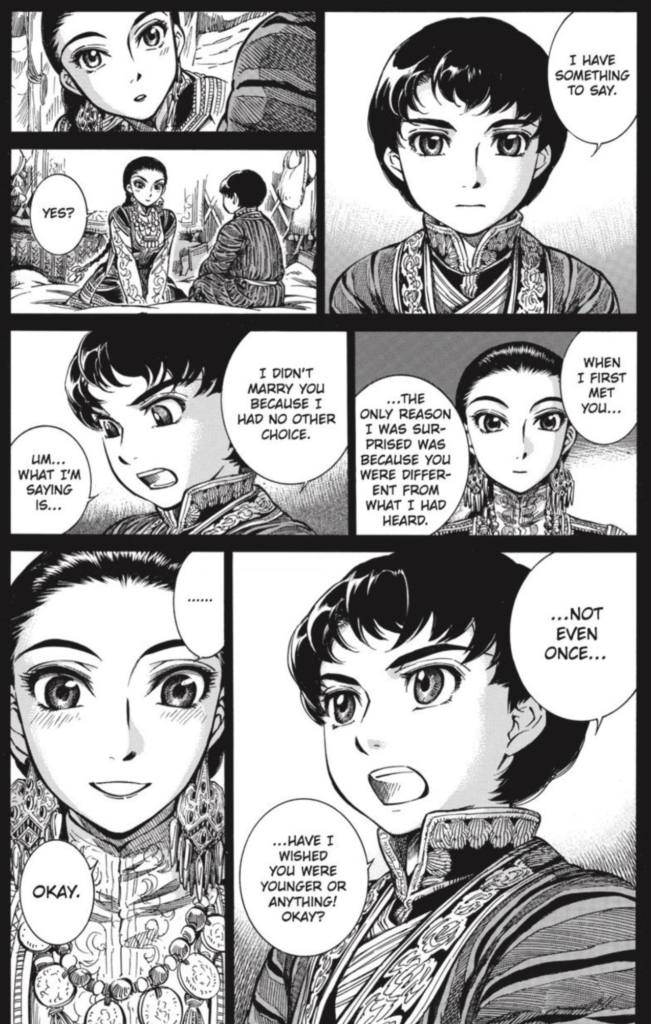
43:00: The kids that are acting as the Greek chorus are fantastic.
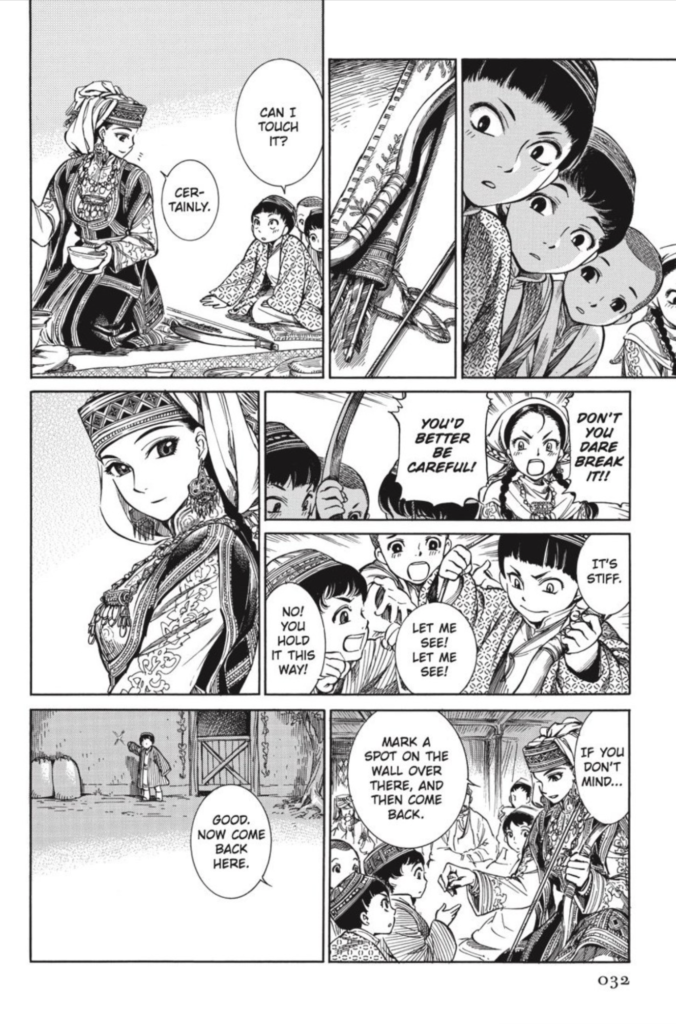
44:29: That scene where they meet and she lifts her veil
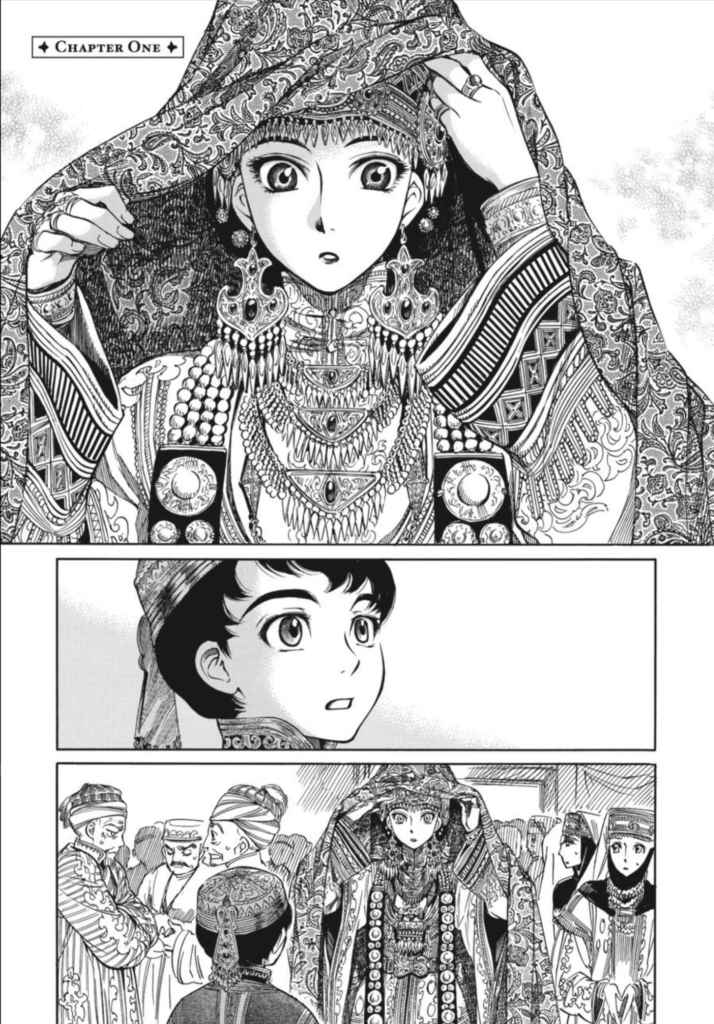
44:50: “A hawk… sitting on your arm…” A subtle, probably unintended dig at Amir here. Oh, being interested in hawks isn’t ladylike, she says to the lady… with the hawk.
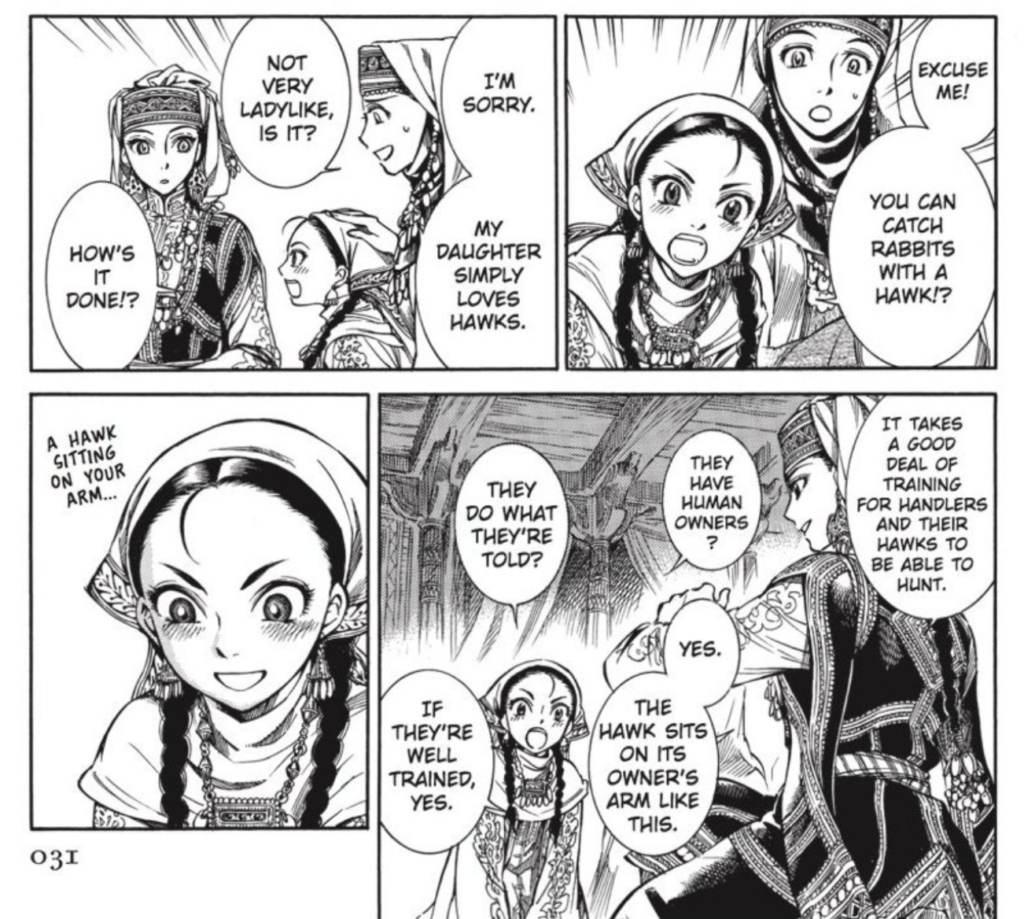
45:29: Kaoru Mori’s Anything and Something is a short story collection as mentioned up top. Apparently hornier, too. 😉 Here’s a few pages.
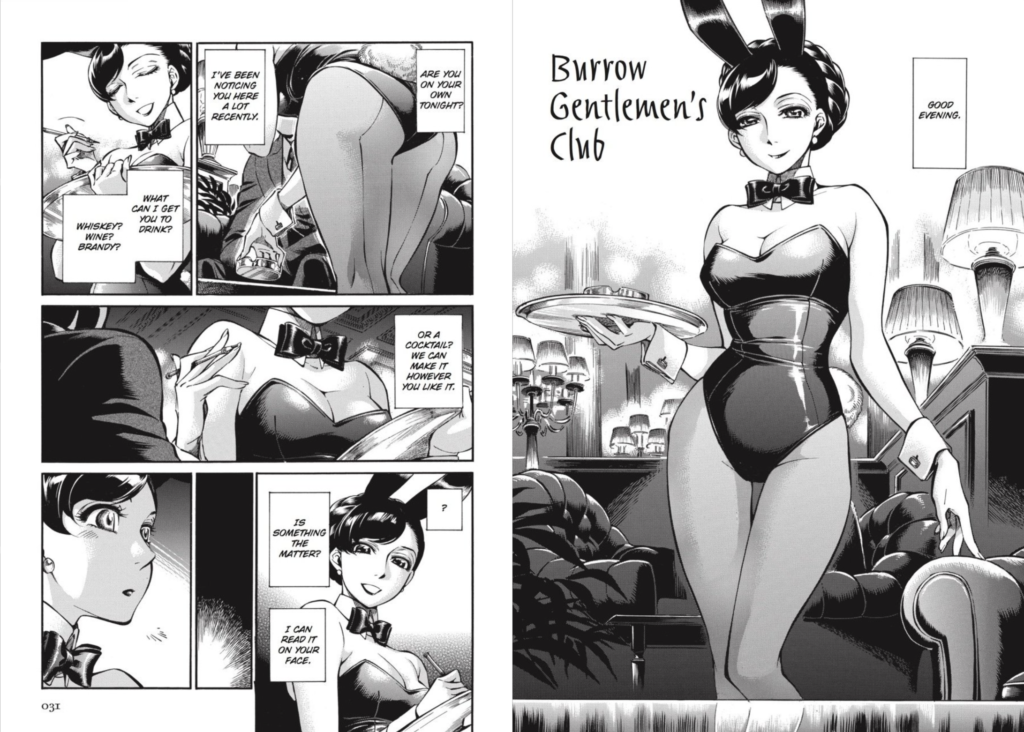
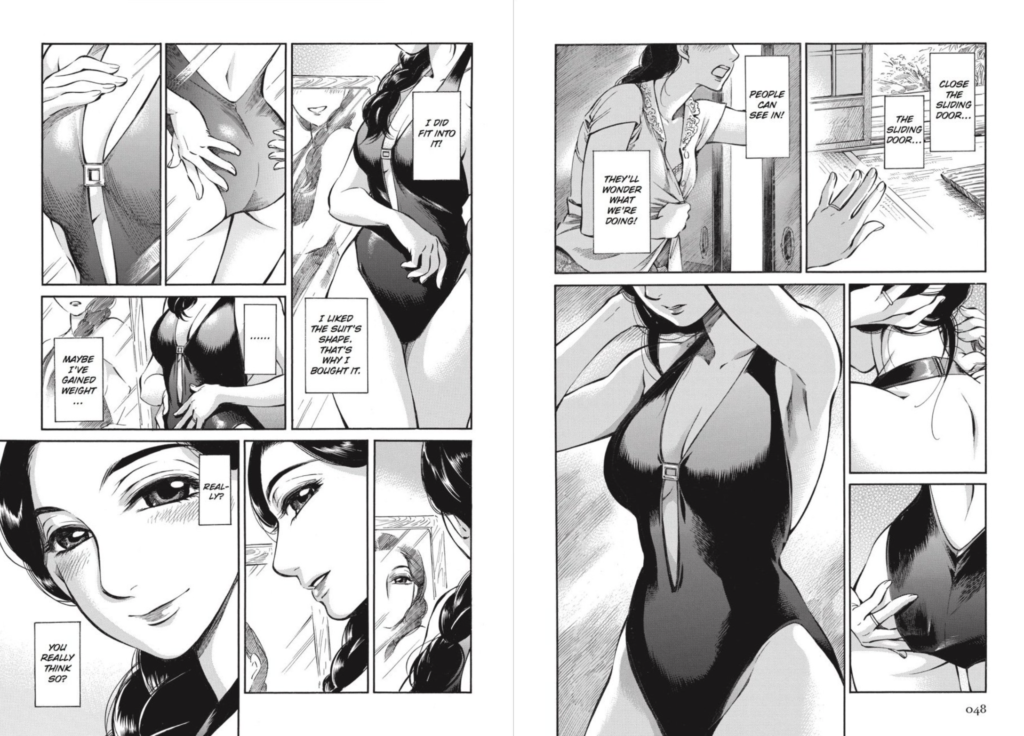
47:00: “They’re all right here…” Sorry this doesn’t make a lot of sense on podcast. I actually keep all of the Mangasplaining books right next to my desk while I work, and I was gesturing to them. 😉
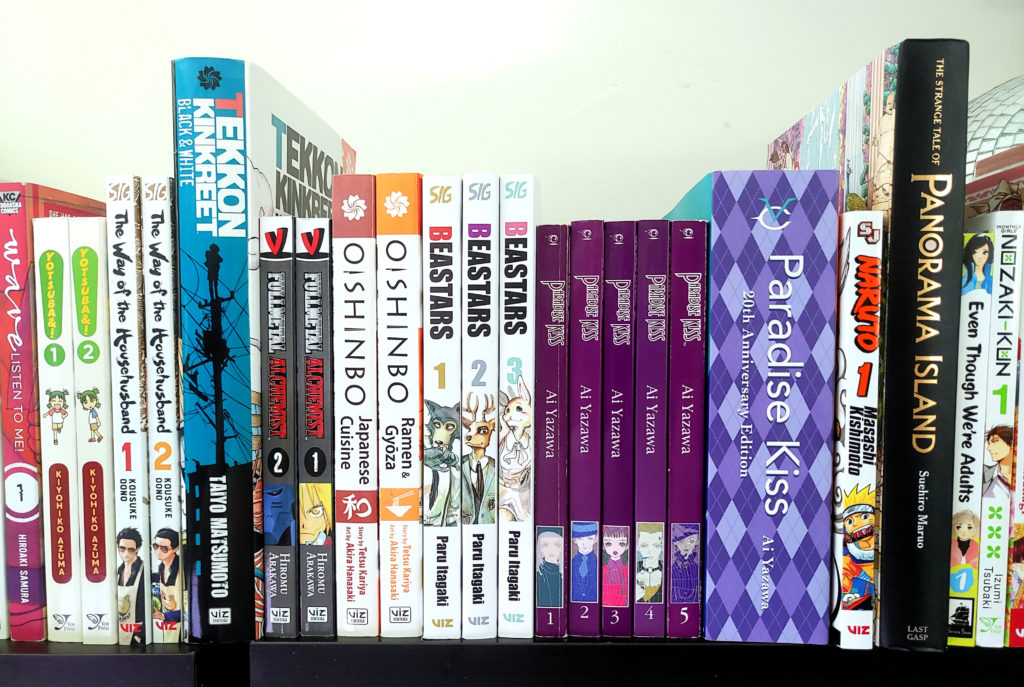
50:30: David tried to trick me about Taniguchi. Did not work ;). Here was that panel, from Hotel Harborview, a very early work by Taniguchi released in English by VIZ as part of a short line of original graphic novels for the bookstore market.
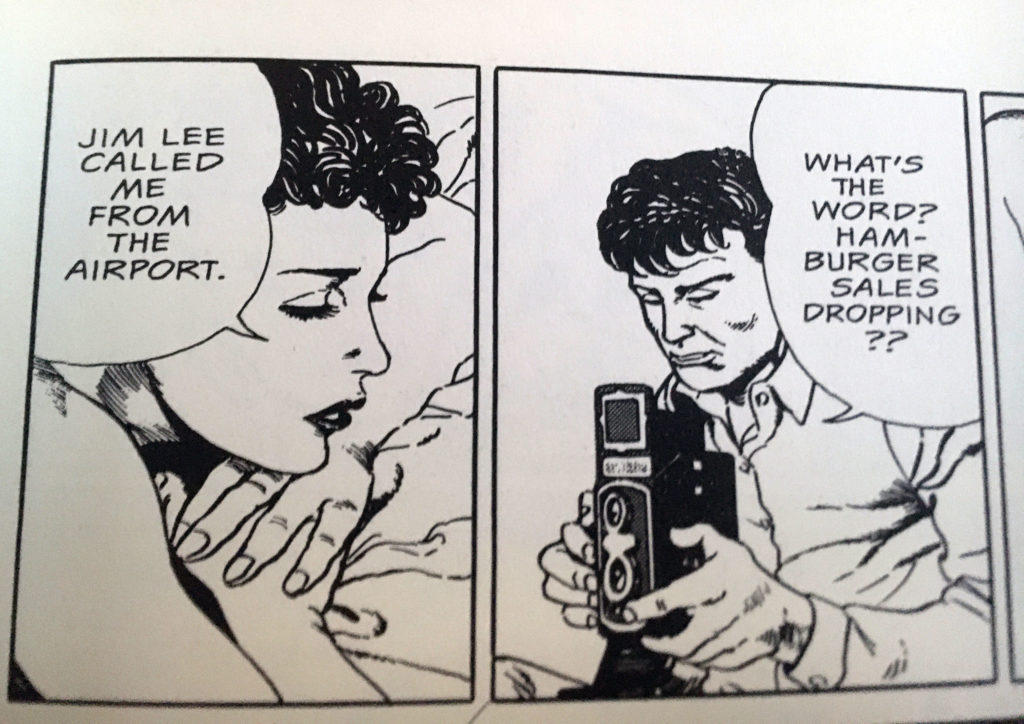
51:45:
“I love A Bride’s Story. It changed the way I view comics. Masterful. 7/10.”
Chip Zdarsky
54:20: Mm, Deb makes a great point here. I love comics formalism and formalist experiments, I actually love Tezuka and his experimental storytelling in Phoenix: Space or Crime & Punishment, but it does draw attention to itself. Not a sin, but it’s incredible to see someone who’s just really good at storytelling tell a story, in a way that tries to make that storytelling invisible. I’d be lying though if I said I wasn’t excited to dig into some of those facets of his work when we get to Phoenix in season 2.
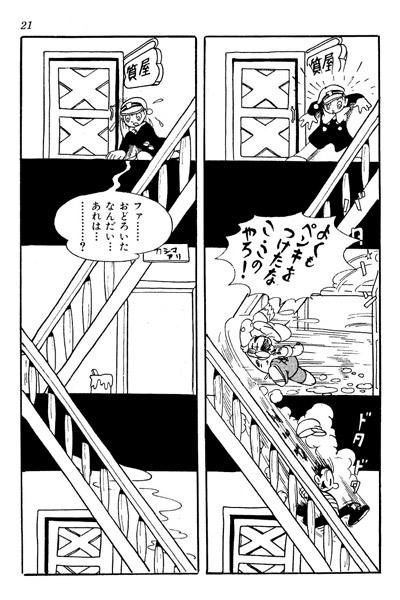
55:30: Emma is 10 volumes, or as Yen Press released it, 5 hardcover 2-in-1 volumes. Speaking of which, we talk a little bit throughout this podcast about watching how creators evolve over the course of their careers. Chip even said he wouldn’t mind going back and looking at Emma, just to see where Mori-sensei started and where she ended up.
Deb put together these images from Emma Volume 1 and Emma Volume 10, to compare how Mori-sensei had matured as an artist.
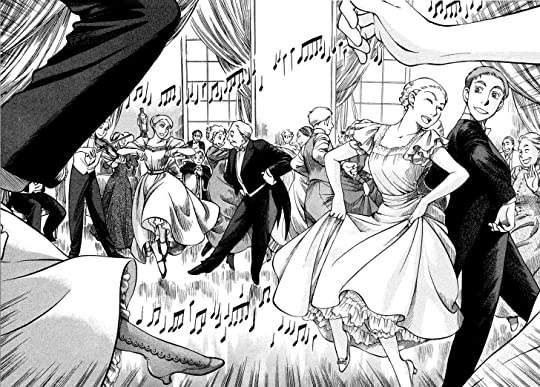
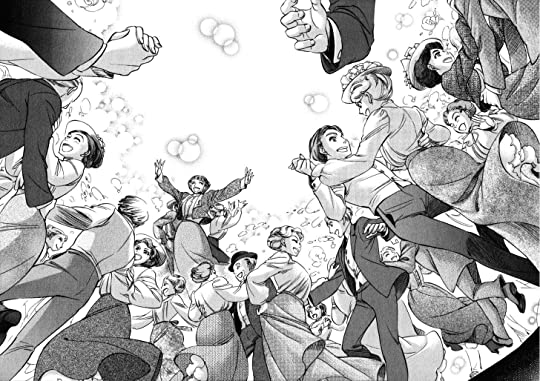
57:08: THE BREAK! Time stamps after this point are approximate.
Time for the reader question of the week, from Josh Hechinger
“A wish-list related question: For manga-ka that have a foothold or outright success in the American market, especially as themselves (“a new Urasawa book” versus “the latest Jump hit”) what barriers/considerations are in play for getting their full catalogs published? Like, I keep hearing Billy Bat will never be translated despite Urasawa’s success, a lot of Otomo’s work remains untranslated as I understand it. I’m still flabbergasted (and delighted) we’re getting [Taiyo Matsumoto’s] No. 5 again but surprised it’s instead of Hanaotoko or Takemitsu Zamurai, etc.”
59:30: We just keep mentioning Usamaru Furuya! Heh. Our big-round up of Furuya-sensei and his work was in the show notes for episode 17 (scroll down).
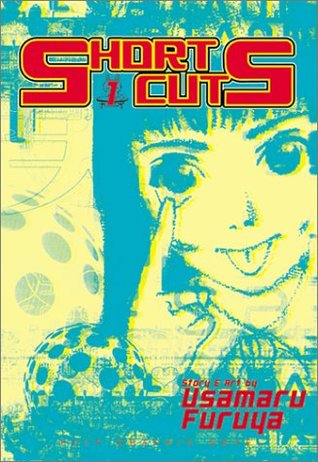
1:00:00: That’s Yuu Watase, author of Fushigi Yugi. The historical BL series Sakura-Gari, which is not legally available in English (tho it was published in French a few years ago), and to which Deb does not give a ringing endorsement.
1:02:41: Denpa Publishing, responsible for such cool manga titles as Kaiji, Maiden Railways, and An Invitation from a Crab. Go buy their books, they’re great, at https://denpa.pub/.
1:03:30: Moyoco Anno’s Sugar Sugar Rune, a story about two young witches trying to get boys to fall in love with them to get stronger witch powers. Totally cute.
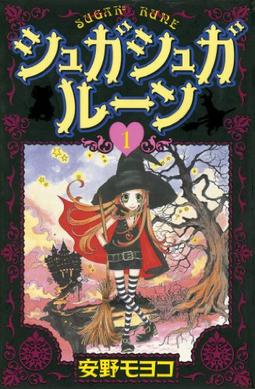
1:04:30: The Transformers manga is actually really good, and the reproduction and printing for this series from back in the 80s is fantastic. I’m really happy that something like this could be released…!
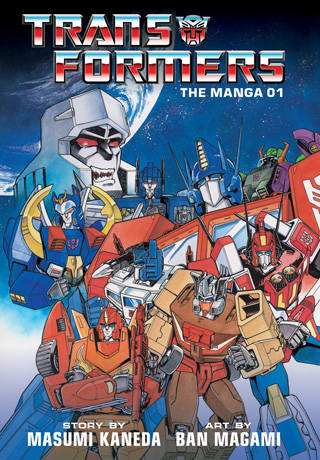
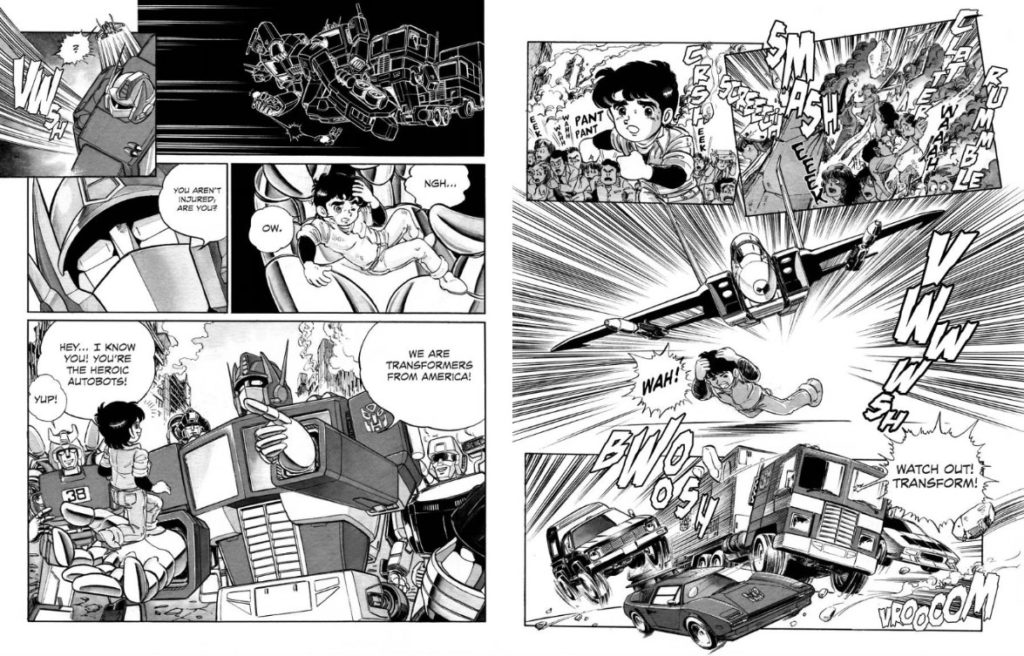
1:05:40: Fuck, the first rule of Mangasplaining is to not mention Kingdom so that the Kingdom people show up.
Second rule of Mangasplaining is to never, ever mention Gintama.
1:07:30: Sadly I was wrong here, Shirley isn’t in print, by Kaoru Mori. CMX released it back in the day, but Yen hasn’t re-released it yet. I _think_ it’s because there’s a second volume released in Japan, and maybe new chapters are occasionally released, so maybe they’re waiting until it’s complete? Unsure about this one, other than to say if you need more Kaoru Mori in your life, there’s at least two unreleased volumes out there.
1:08:00: This is where that sound stuff we were mentioning kinda kicks in while David’s talking, sorry.
1:09:20: We’re talking about anime director Masaaki Yuasa, whose work includes Japan Sinks 2020, Eizouken!, Devilman Crybaby, and of course Ping Pong: The Animation.
1:09:45: Verotik’s 2000s’ era Devilman colour manga is a triumph of bad ideas.
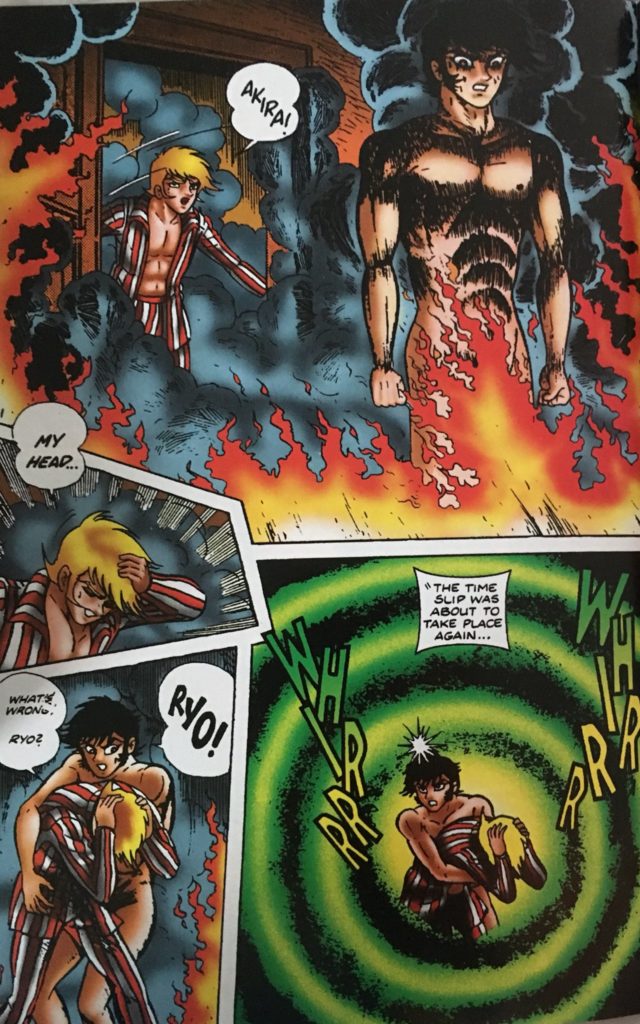
Also, those Verotik boobs I was talking about:
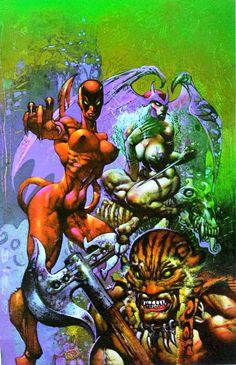
[Deb]: You can get the original Devilman by Go Nagai as a 2-volume hardcover series, available now from Seven Seas Entertainment. It’s in black and white, but trust us, it’s for the better.
1:11:10: We’re talking about Monkey Punch’s Lupin III, which is getting a special edition release this fall from Seven Seas.
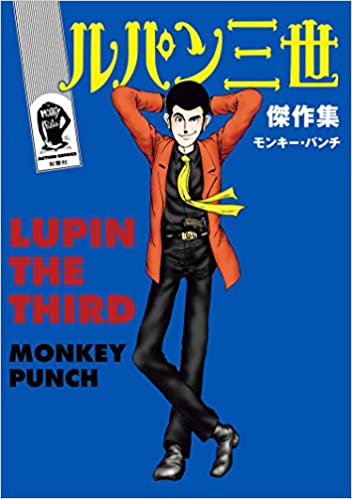
1:12:00: We need to give Chip a better grounding in shojo manga before we dig back into 1970s shojo manga. Also, we talked a LOT about classic manga during the Monthly Girls Nozaki-Kun episode, including Lupin, Rose of Versailles, and many more. Check out the show notes here and scroll down to the break, with the picture of the boat. 😉
https://www.mangasplaining.com/blog/ep-18-monthly-girls-nozaki-kun/
…and that’s the episode!
Thanks so much for listening and reading along! 🙂
You can find A Bride’s Story and many of the other books mentioned above at a comic shop near you, via comicshoplocator.com. Thanks again to D.A.D.S. for their musical accompaniment this week, and we’ll see you again next time! Take care!
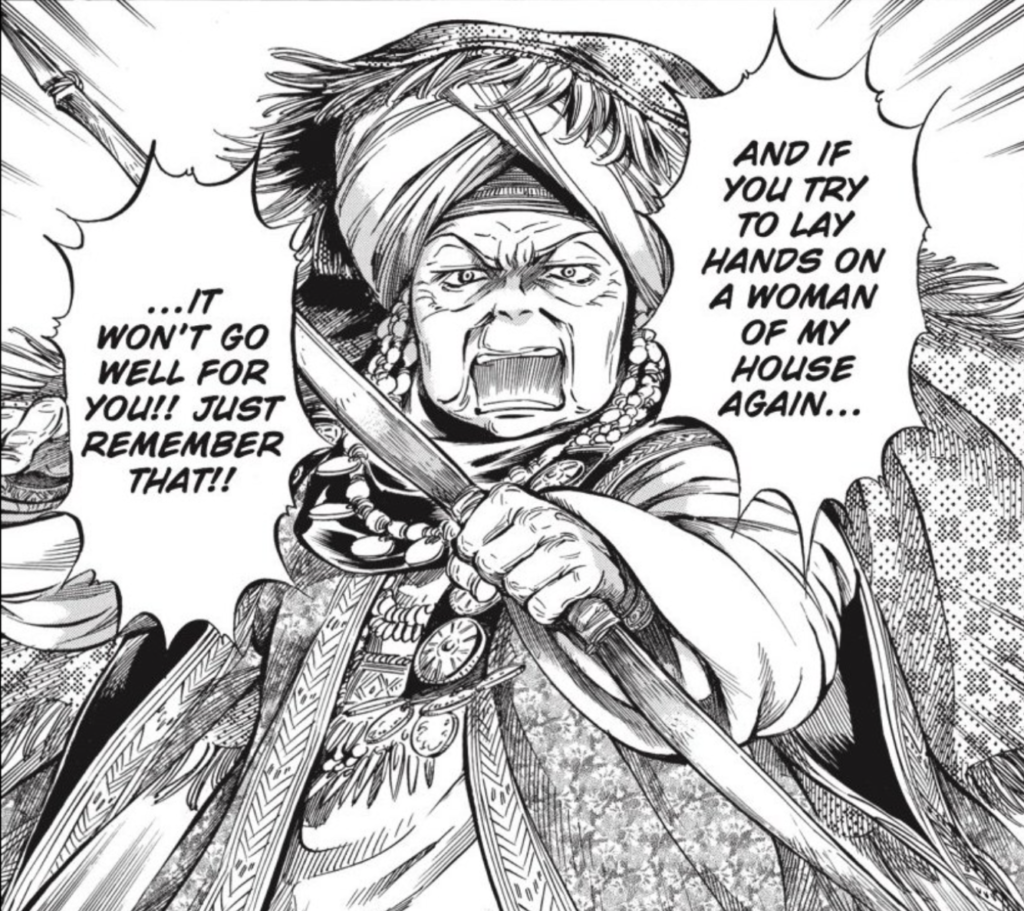
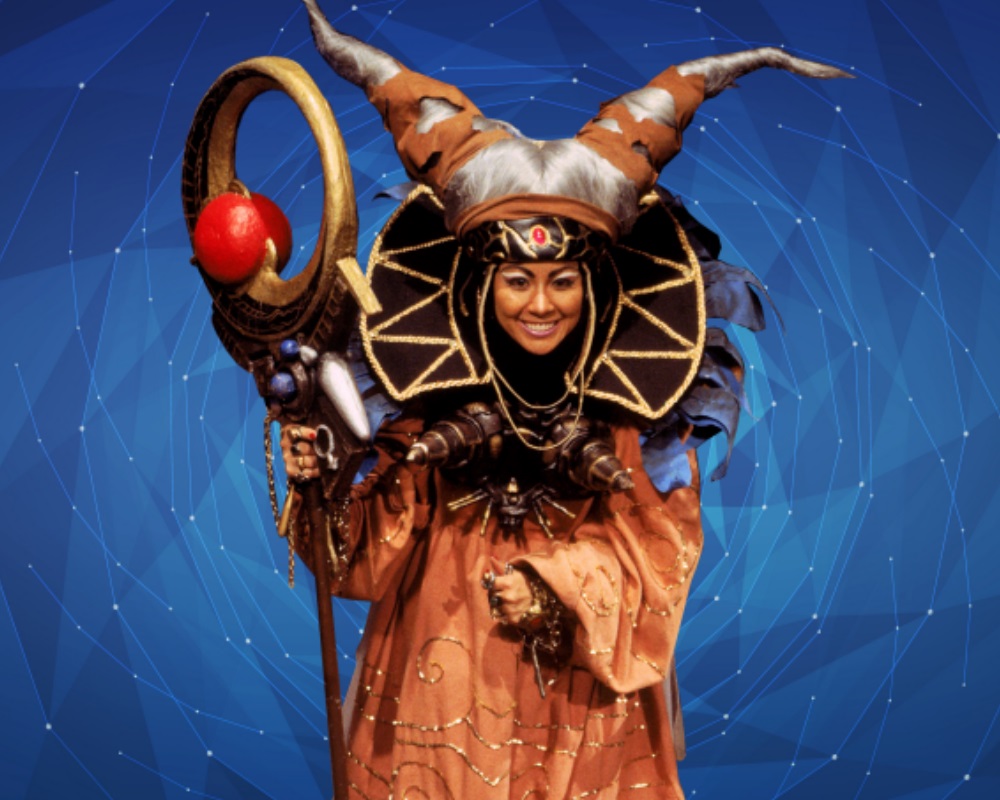
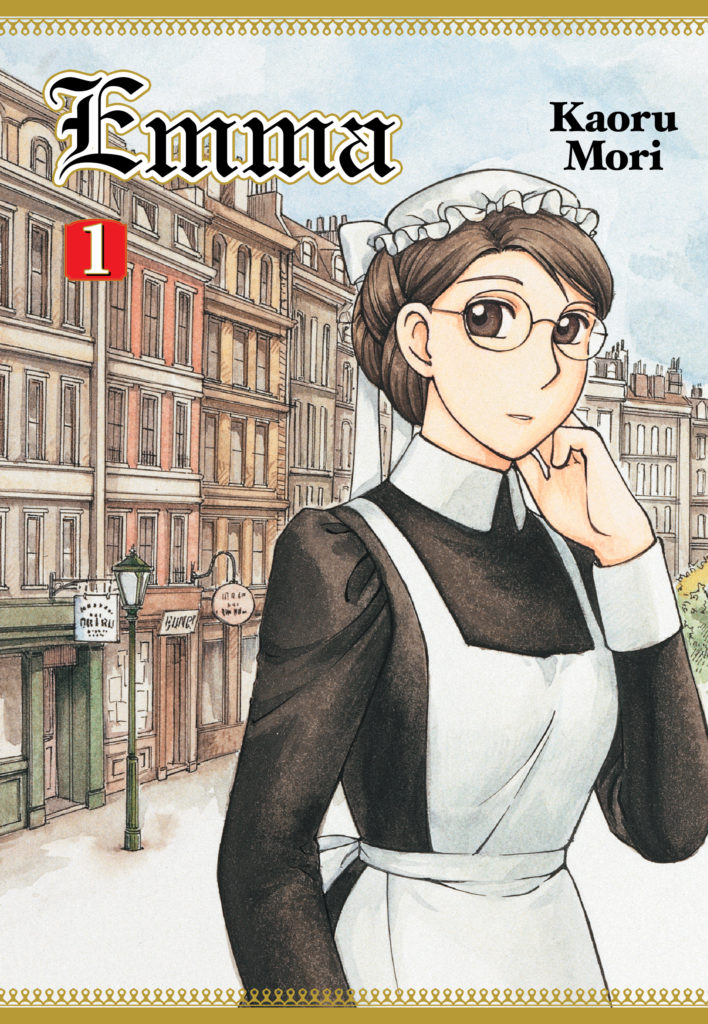
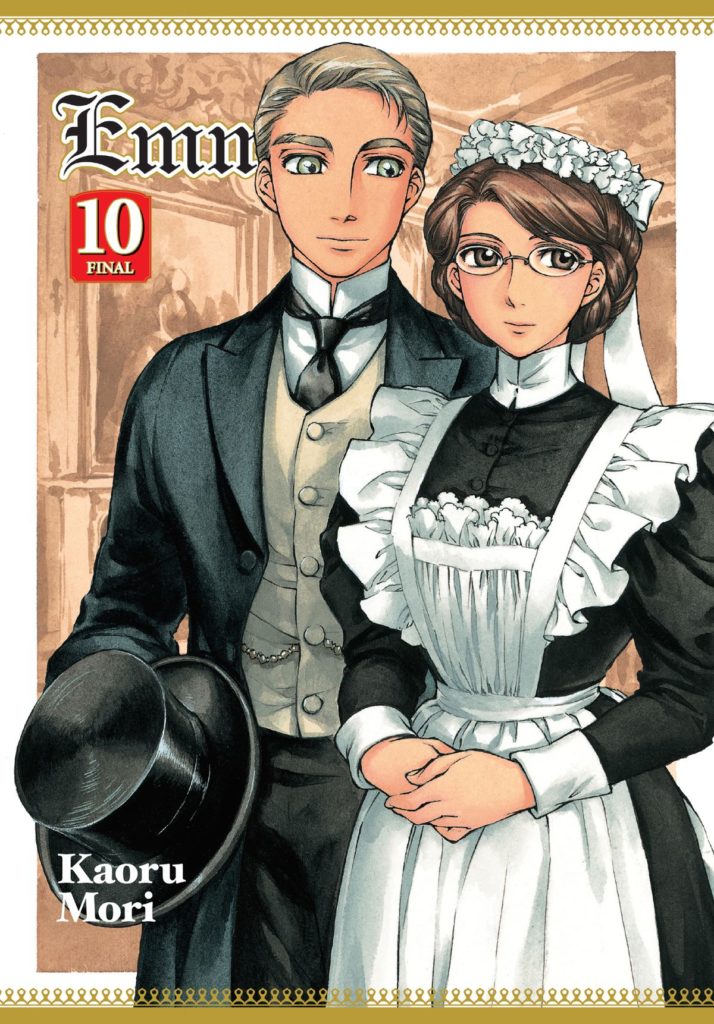
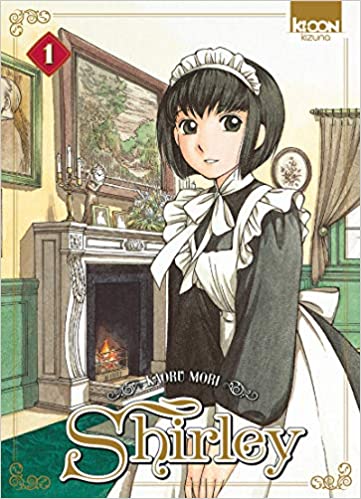
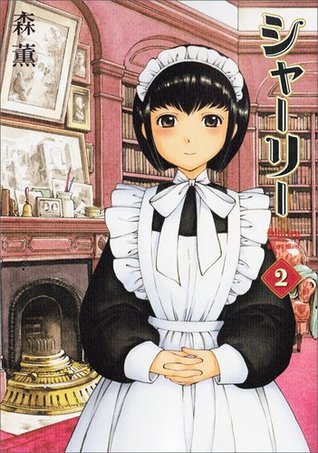
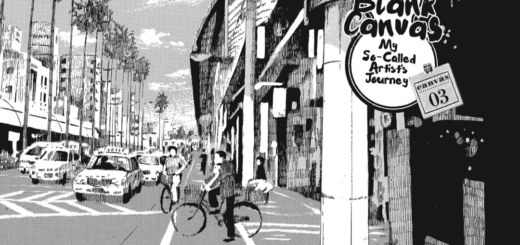
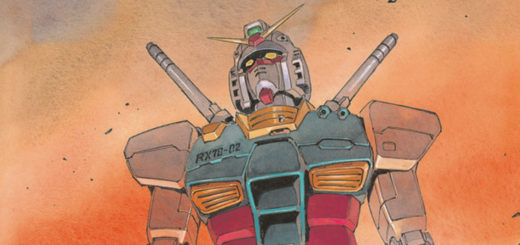
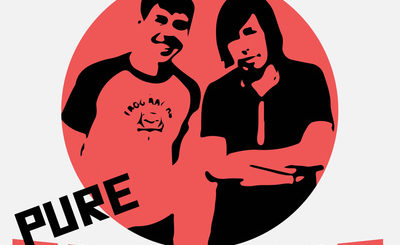
Fabulous podcast. I’ve heard so many good things about A Bride’s Story, but Chip’s 7/10 is awfully compelling. ^_^
Jumping in to answer the Rose of Versailles question (obviously, Erik’s the guy who has the whole story.) As I understand it, the hold ups came in two flavors.
One holdup was that a lot of the color art was no longer in the publisher’s archives. 1972 was long enough ago that even I was a young’un. Erik found someone with many of the missing pieces by doing incredible research.
Two, Ikeda-sensei is alive and involved with her works being licensed. Every choice made had to be approved. Every image, the image placement, size, the covers (which are spectacular, as you know) all had to get approved by Ikeda-sensei’s people. It slowed things down, but in the end what a magnificent set that I think is worth the wait.
I won’t ask you folks to read it, though, as it’s only hardcover, hefty and pretty high end. ^_^ Poor Chip!
Haha, it’s definitely on the list. We’ve been talking (behind the scenes) about classic shojo, and it’s kind of shocking how much of it is out of print already. All of the Fantagraphics stuff for example. It’s kind of a bummer! Rose of Versailles is just about to go back for a third printing (!) which is pretty darned cool, bigups to Erik for keeping it in print.
Give me Kingdom :'(
One of the best selling manga in Japan!!!
Bride’s Story is so very good. I love the way it uses marriage to talk about everything else. In this volume, you learn about how different tribes in the area relate to each other because of how marriage plays into it. So it’s politics. But it’s also a display of wealth, through dowries. Later volumes explore how it relates to family histories, or what it means to be a man in that context. Or what wealth means for a woman in that context. And all of it while very much focusing on marriage. I am a fan, and it is very cool.
Another thing it shows in passing, is being inside the culture vs outside. Amir is a foreigner to her husband’s tribe and her ways are strange to them. But she’s nowhere near as much an outsider as Smith is. There are degrees of foreigness. And other volumes explore that in other ways too. I can imagine that’s something you might feel compelled to examine when you’re researching a whole a culture entirely foreign to you for your book. In that point in the story, Smith might not be a reader stand in, but maybe a writer one?
Anyway, I’m glad y’all loved it. And I look forward to David suggesting Dorohedoro at some very future point in time. Some very very future point in time. I predict it.
Another great episode! I’m so impressed by the art here. And to hear that it’s all painstakingly done by hand and not digitally, wow! I’ll definitely be checking this series out.
Since you talked about the quality of scanners and digital files: If scanners weren’t as good 15 years ago, which resulted in poor-quality digital files (compared to today’s standards anyway), does that mean printed books from 15 years ago also looked poor? This is probably a really silly question, but I’m asking because it’s not like book dimensions have gotten larger over the years. So if something was physically able to be printed 15 years ago, my initial thought would have been that it could still be physically printed today using the same files.
Hi KC. I’ve been thinking a lot about this question, and honestly, sometimes? Comics and manga used to be photographed and then printed from film, which would have insanely high “DPI” as it were, and older work can look really beautiful. There is a period in the 90s/2000s where the switch to digital meant that lower quality work, usually only at 600dpi (as opposed to 1200dpi for linework today), would sometimes be printed. I know that contemporary reprint projects often do entirely new scans where possible, to mitigate this. If I come across anything particularly egregious I’ll maybe share it here, but for the most part everything’s at least readable.
That makes a lot of sense. I didn’t consider the migration from analog to digital and how digitising the visuals at that time wasn’t that advanced. Now that I think about it, anime from that period also don’t look that good either. Thank you for the answer.
Another great episode!
While I was aware of Kaoru Mori’s work, I have yet to read any of her manga myself. This episode convinced me to go out and get the first few volumes of A Bride’s Story. Can’t tell you how excited I am to jump into a 7/10 manga series. 🙂 The art is just so lush, I can’t want to read it. So glad to hear the story is as compelling, if not more so, than the art.
Thanks for the detailed answer to Josh Hechinger’s question. I think the world needs a summary of that answer posted to a manga FAQs, maybe even a link displayed prominently on all the publishers’ websites. I know people think, probably in part because of scanlations, that it should be a piece of cake to just translate it, never once giving thought to the quality control measures involved, cost performance, and even (maybe most importantly) the original creator’s own wishes for how their product is presented. I love the attention you give to the publishing process of manga in both Japan and translation, from the lettering and retouching to the translation itself, not mention the context for which each volume you discuss was published in.
I recently started reading this manga and am up to Vol 9 already. I echo everything said. Things Deb said have somewhat allayed my fears concerning the very likeable Smith. I also would have described the series as slice of life/historical/rom-com up to volume 4. Then something clicked with the background references to the Russians. Just why is this English academic here? Is he an agent of the British Empire? It’s a possibility that has heightened my sense of the stakes in the story. Is this character I find likeable betraying the hospitality he’s shown? On the longer view, Kaoru Mori making me care about her fictional characters, leaves me caring a bit more about the culture competing empires and other Western powers will assault repeatedly.